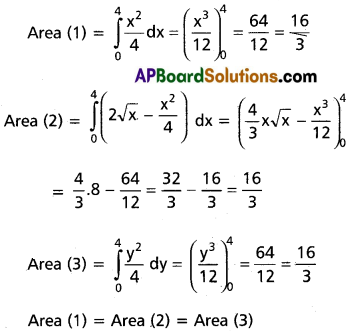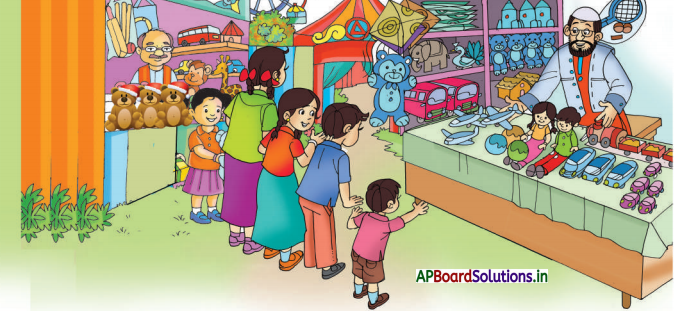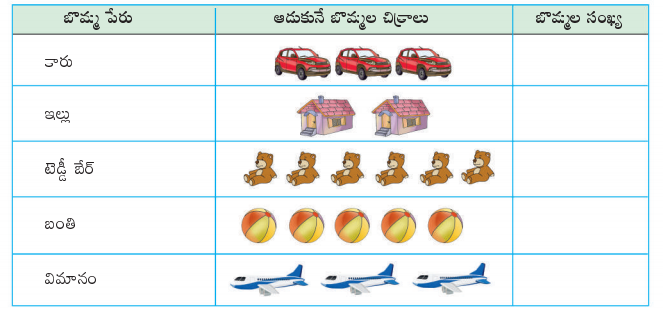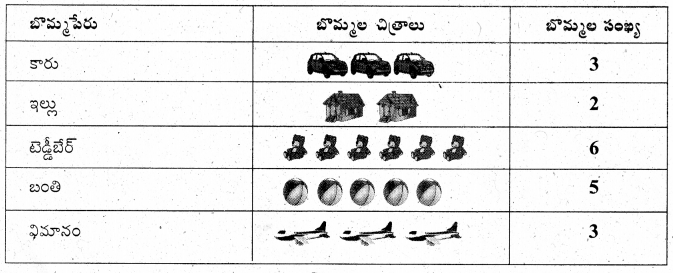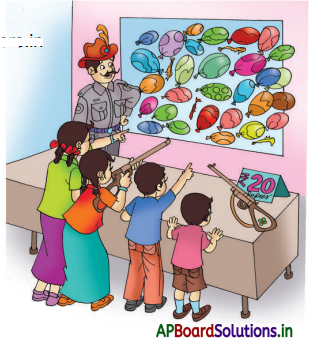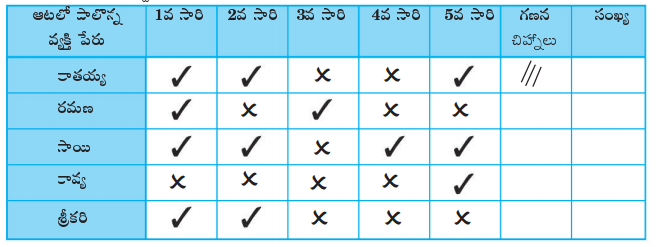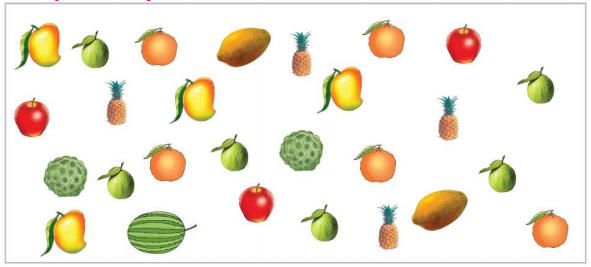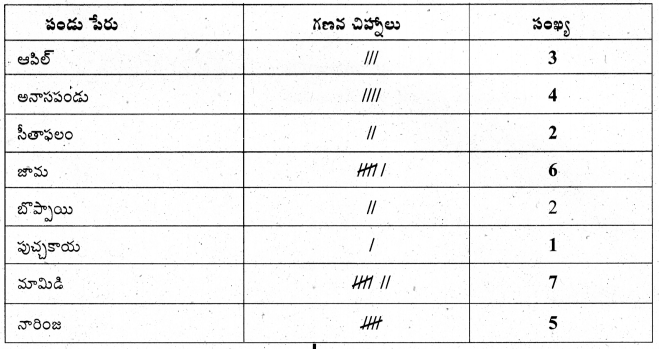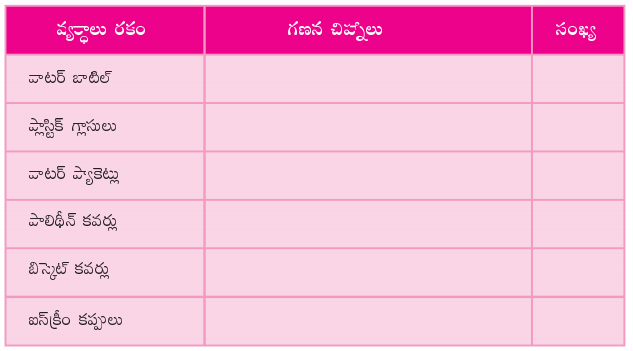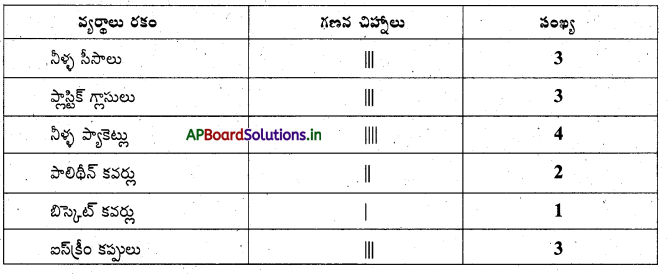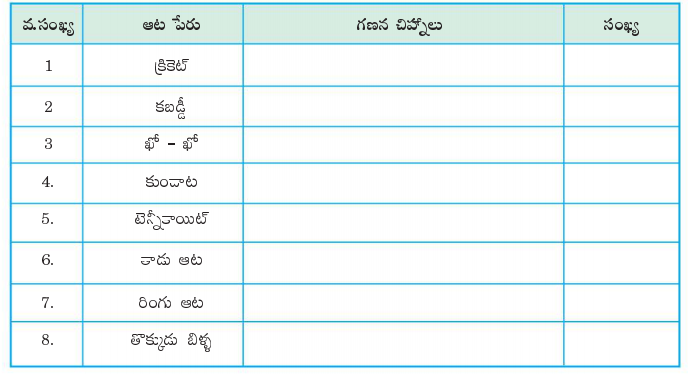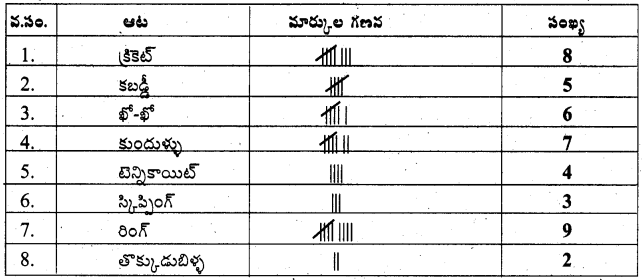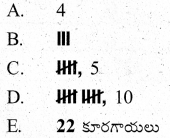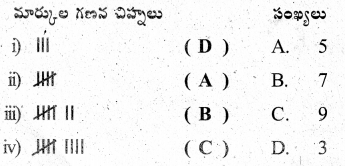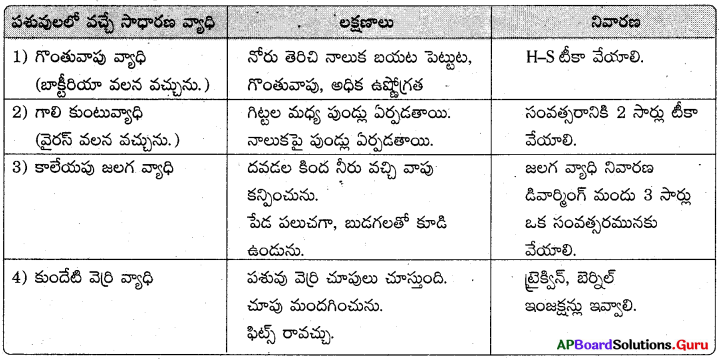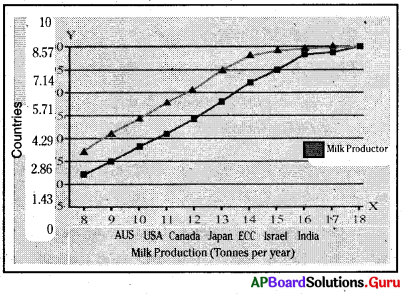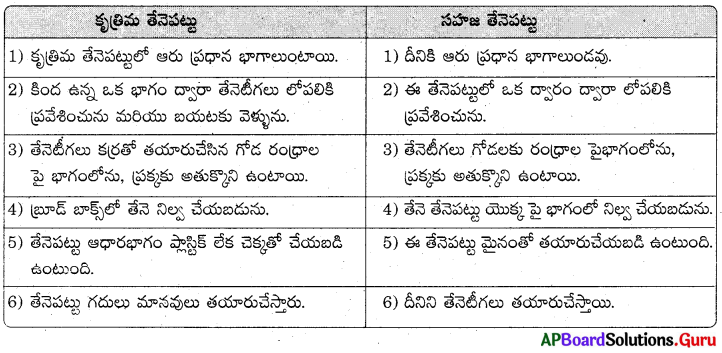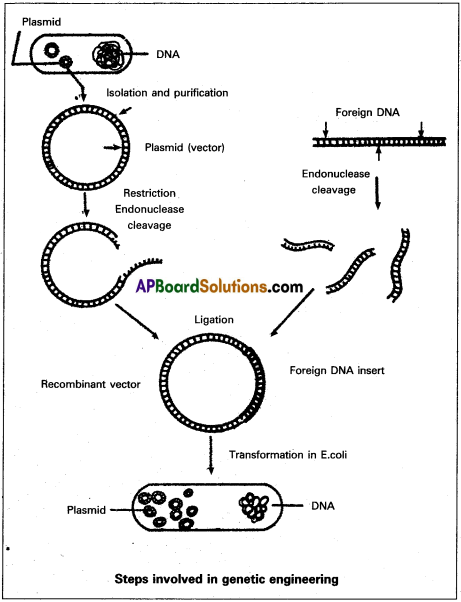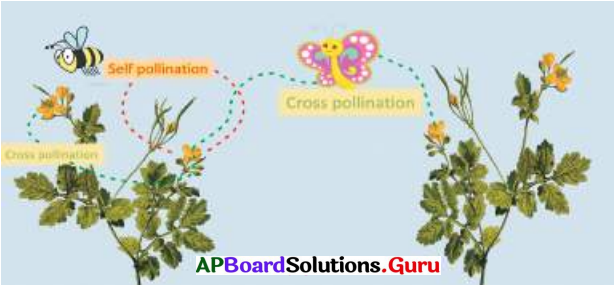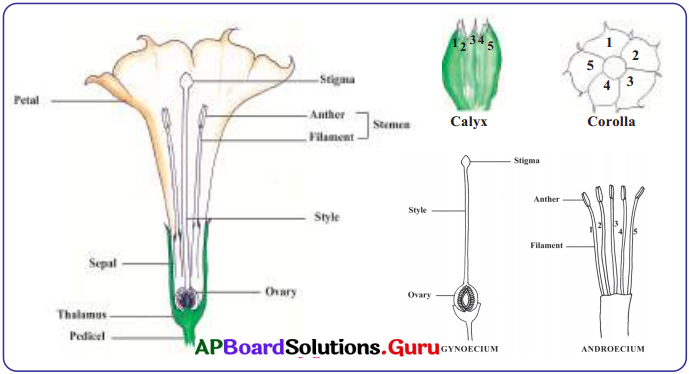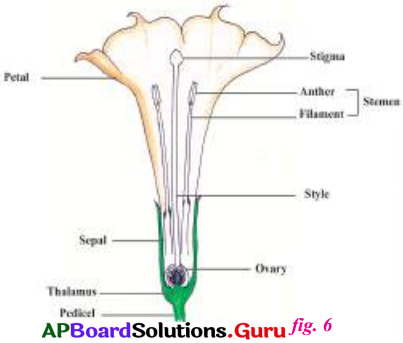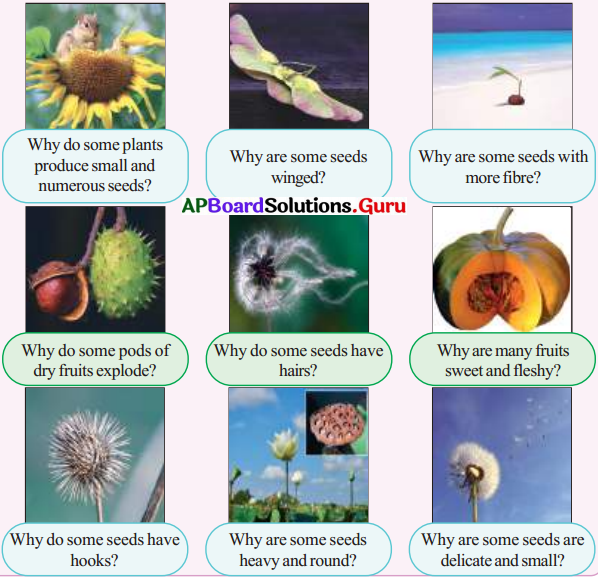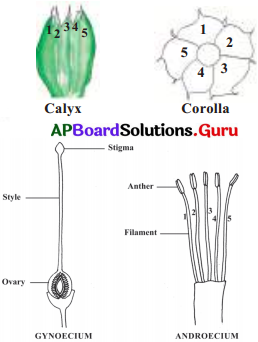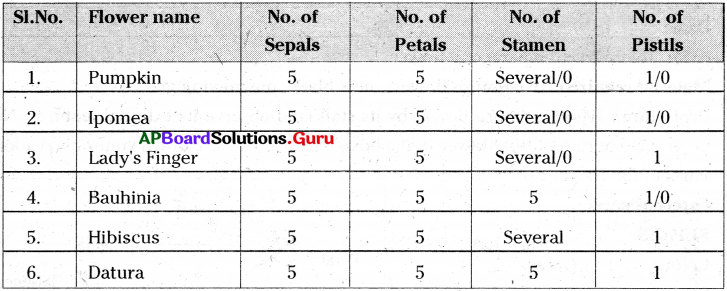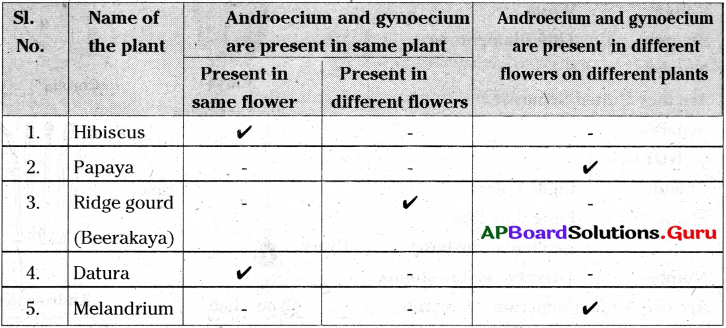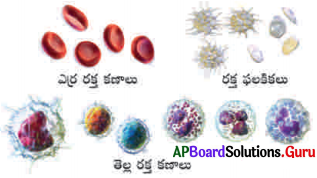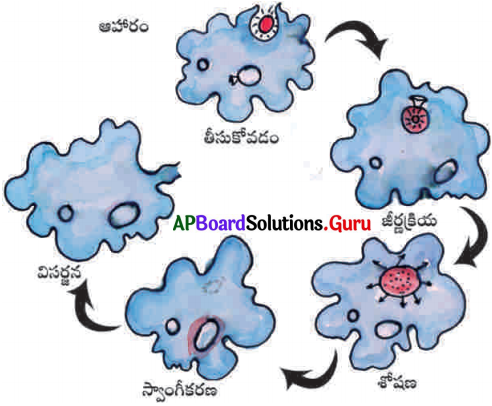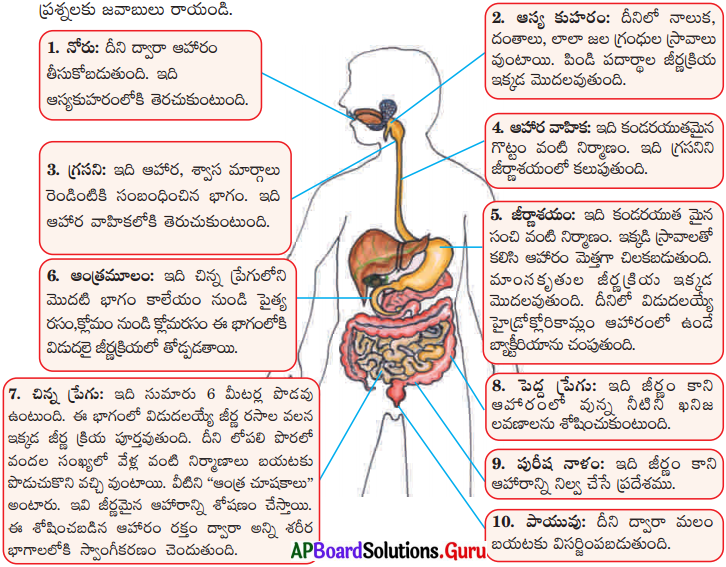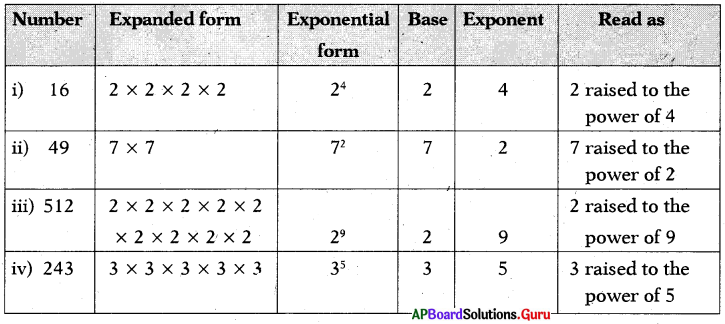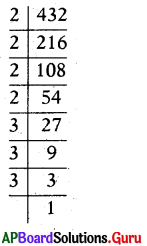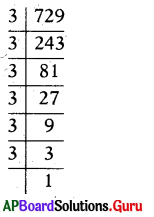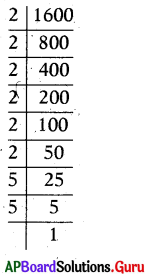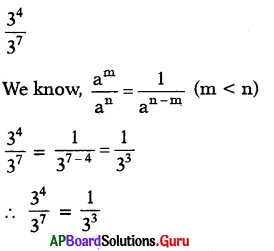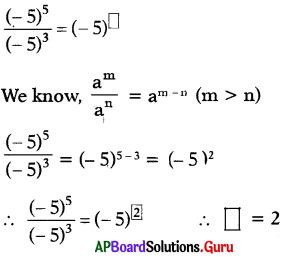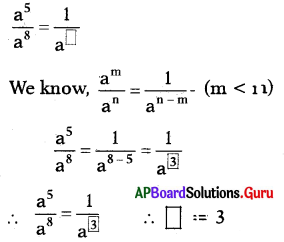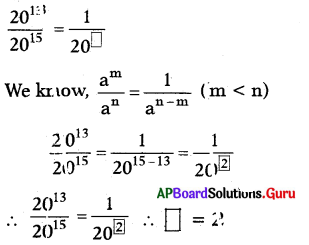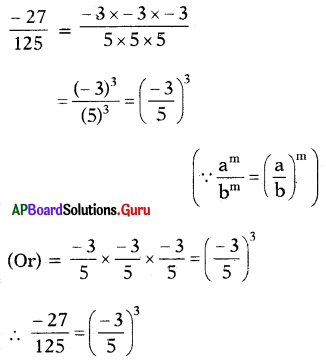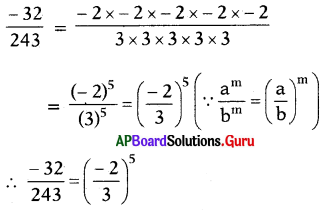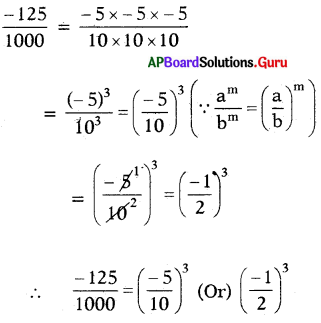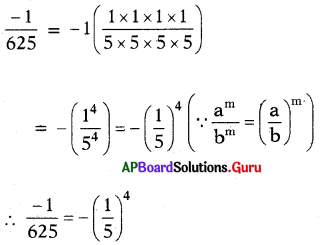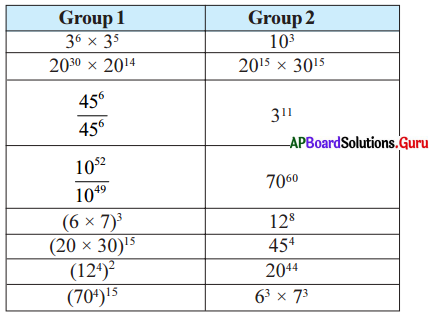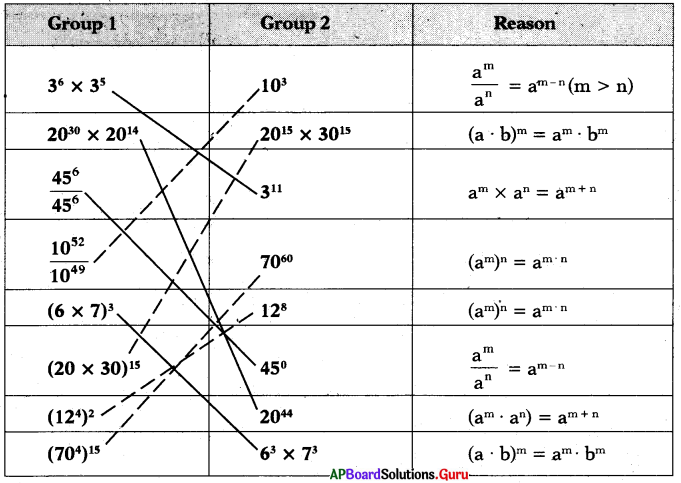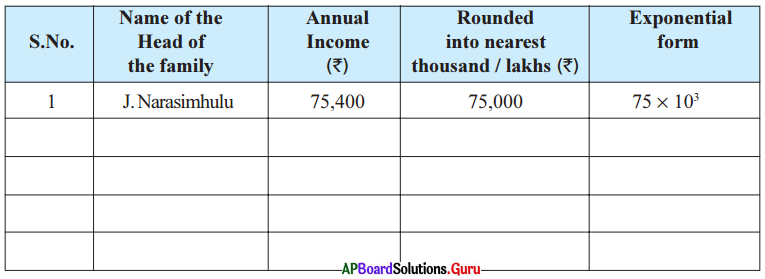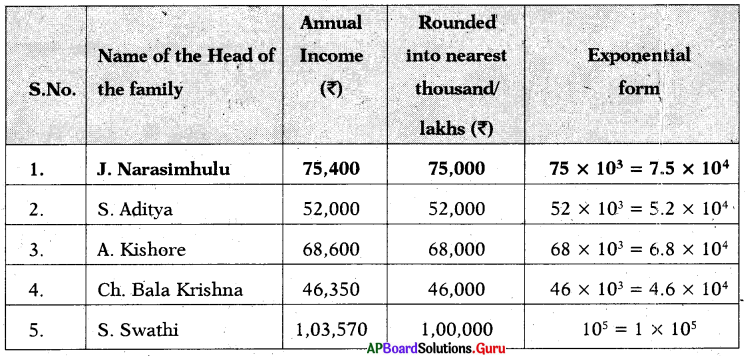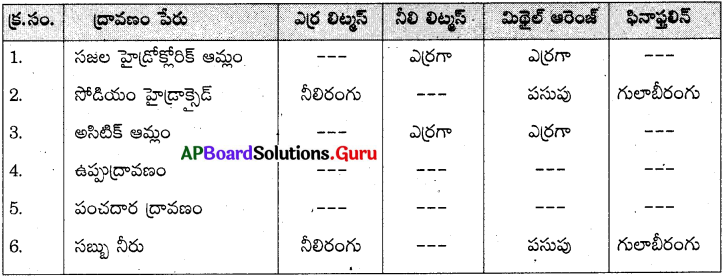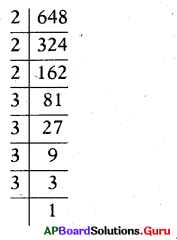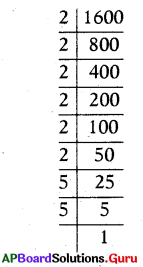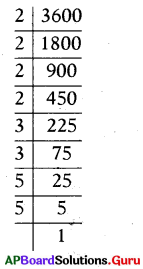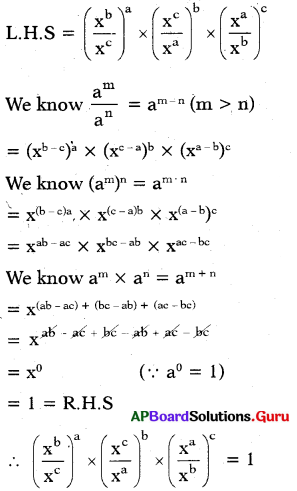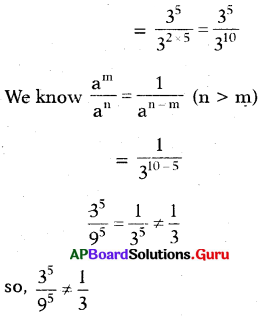Andhra Pradesh BIEAP AP Inter 2nd Year Economics Study Material 4th Lesson Agriculture Sector Textbook Questions and Answers.
AP Inter 2nd Year Economics Study Material 4th Lesson Agriculture Sector
Essay Questions
Question 1.
Explain the importance of agriculture sector in the Indian Economy.
Answer:
Agriculture plays a vital role in Indian economy and is the backbone of Indian Economy. It provides employment to around 55 percent of the total work force in the country. It provides raw materials for industries and market for industrial goods. It is the supplier of food for 121 crore people. India is the land of producing multiple goods (crops). In our country agriculture is not only an important occupation of people but also a way of life culture and customs.
Importance:
1) Share of Agriculture in the National Income: Agriculture sector, including forestry, fishing, mining, quarrying and allied activities like animal husbandry, horticulture, silk industry etc.’, is significantly contributing to the Gross Domestic Product in India.
The share of agriculture in National Income has been disclining gradually from 1950-51. This is mainly due to the development of non-agriculture sectors during the five years plans in the economy. The share of agriculture in national income declined gradually from 56.5 percent in 1950 – 51 to 13.9 percent by 2013 -14. The share of agriculture in national income in U.K. and U.S.A is 2 to 3 percent. The proportion is about 7 percent in France and 6 percent in Australia.
2) Employment Providing Sector: Agriculture dominates the economy to such an extent that a very high proportion of working population in India is engaged in agriculture.
Agriculture provided employment to 98 million peoples in 1951. Thenumber of people working on lands both the cultivators and agricultural laborers increased to’234 million in 2011.
In case of developed countries the population engaged in agriculture is very much less. Ex: In USA and UK only 2 percent, in Japan and France 4 percent.
3) Importance in International Trade: For a long time three agricultural based exports of India like cotton textiles, Jute and tea accounted more than 50 percent. If we add other agricultural commodities the share of agriculture in exports will rise to 70 to 75 percent.
At present we are exporting Sugar, Cotton, Tobacco, Rice, Cashew nuts, Spices, Oilcakes, Coffee, Tea, Fish, Meat, Fruits, Pulses etc., to foreign countries. By exporting all these products we are earning foreign exchange.
4) Effective Social Safety Net: Though agriculture presently contributes less than 15 percent of Indians GDP yet it continues to employ more than half of the work force. If crops, animal husbandry, fisheries, agro-forestry, silk industry and horticulture are developed at household level, hunger and poverty will be alleviated. Green Revolution, along with White Revolution and Blue Revolution, provides income and employment to the rural poor by eradicating poverty. Thus, agriculture acts as an effective social safety net.
5) Food Supplier of the Expanding Population: The Hunger Index shows that India’s rank is 55 out of 76 countries. According to FAO, India is a hunger affected country. Because of the heavy pressure of population the existing levels of food consumption in our country are very low. The per capita availability of food grains was 510.1 grams per day in 1991. But it has declined to 468.9 grams in 2013. Therefore, unless agriculture is able to increase continuously its marketed surplus of food grains a crisis will emerge.
6) Role of agriculture in Industrialization : Industries which depend on agriculture products for their raw material are called agro-based industry. Industries like Cotton, Jute, Textile, Sugar, Flour mills, Edible oil etc., directly depend on agriculture for raw material. Some other industries like handloom weaving, rice husking, food processing, oil crushing, horticulture etc., are depend on agriculture. The development of agriculture sector will expand .the demand for industrial goods. Thus the development of industrial sector facilities the development of agriculture sector by supplying inputs like machines, fertilizers, pesticides etc.
7) Market for Industrial Products: Two thirds of the populations of developing country like India lives in rural areas. The purchasing power of these people in rural areas is too low to purchase industrial products. If steps are taken to increase agriculture produce and productivity, the income of the rural sector will increase. As a result of increase in income of those who depend on agriculture in rural areas causes demand for industrial goods. The increased demand for industrial goods leads to the development of industrial sector.
8) Other Factors:
a) The development of agriculture sector directly promotes growth in transport sector.
b) Development of agriculture sector invites expansion of branches of banks into rural areas.
c) Agriculture development minimizes migration from rural to urban.
d) Farm tourism in rural areas can be developed through the development of agriculture.
e) Agriculture and its allied sectors play a key role in protecting biodiversity.

Question 2.
Explain the present conditions of agricultural labour and suggest the measures to improve the conditions of agricultural labour.
Answer:
The number of people living in agriculture sector in developing country like India is very high. Unfortunately agriculture labour belong to economically depressed and socially backward sectors of rural economy.
The people who work on agriculture sector for their survival can be treated as agricultural labour.
Conditions of Agricultural Labourers :
1) Low Social Status: Most of the agricultural labourers are belonged to the depressed classes. They have been neglected for ages. In case of such farm labourers, exploitation has become common and they have not fought for their rights.
2) Unorganised : Agricultural labourers are living in scattered villages. Moreover, they are illiterates. Hence, they cannot easily to be organized. As a results it is difficult for farm labourers to bargain with the land owners for good wages.
3) Seasonal Employment : Agricultural labourers have to face the problems of unemployment and underemployment. They are employed while sowing and harvesting season, of the year they remain unemployed.
4) Low Wages and Income : Agricultural wages and family incomes of agricultural labourer are very low. The wages of farm labourers vary from state to state. In case of attached labourers these wages are pathetic. However, as prices also increased considerably, the real wages rates did not increase much.
5) Rural Indebtedness : Because of the low level of income agricultural labour generally seek debts. In fact the debt of agricultural labourers passes from generation to generation and become bonded labour.
6) Femanisation of Agricultural labour : Female agricultural workers are generally forced to work harder. They are paid less wages comparatively to male workers.
7) High Incidence of Child labour: It is estimated that one-third of child labourers in Asia are in India. The largest number of child workers are engaged in agriculture. Wages paid to child labourers are too low which adversely affect the incomes of their households.
8) Lack of subsidaty professions : Another serious problem that is being faced by farm labourers is lack of non-agricultural occupations in the villages. As there is no work on the fields, agricultural labour has no other means to earn for subsistence. Thus, they are disguised and are burden on land.
Measures to Improves the Conditions of Agricultural Labour:
1) Minimum Wages Act: It was passed in 1948. According to this act every State Government was asked to fix minimum wages for agricultural labour within three years. According to this law while fixing the minimum wages, the total costs and standards of living in various states of the country or in different parts within the states are to be kept in view.
2) Providing Land to Landless Labourers : The Government has distributed land to landless labourers with a view to improve their economic position. The surplus land obtained by enforcing Land Ceiling Acts and those donated in Bhoodan and Gramdan were distributed among the landless labourers.
3) Provision of House sites and Houses: Mostly, agriculture labourers do not possess their own houses. Governments have taken several steps during the plans periods to provide free house live “Indira Avasa Yojana (IAY)”, “Minimum Needs Programme (MNP)” etc.
4) Organization of Labour co-operation : During the second five year plan efforts were made for the formation of labour co-operatives. They provide employment to farm labourers and also eliminate the exploitation.
5) Special schemes for Providing Employment: A number of schemes have been initiated in planning period to provide employment to agricultural workers. Some important schemes are Rural Works Programme (RWP), Crash Scheme for Rural Employment (CSRE), Employment Guarantee Scheme (EGS), Food for work Programme (FWP) etc.
6) Sanction of Loans and Subsidies: Loans should be provided to the farm labourers at low rate of interest in order to start their own business. Sometimes Governments resorts debt moratorium for immediate relief of debts of agricultural labour and marginal farmers.
7) Abloition of Bonded Labour: Both exploitation and slavery are inhuman activities and punishable offences. The Government of India passed a legislation known as the Bonded Labour System Abolition Act, 1976.
8) Development of Cottage Industries: In order to minimize the pressure of population on land and to improve the economic conditions of farm labour, the Government has been making efforts to start the cottage and smalLscale industries in the rural areas of the country.

Question 3.
What are the factors affecting cropping pattern in India ?. Suggest the measures to correct the cropping pattern.
Answer:
The economic development of any nation depends on the utilization pattern of natural resources like land, water, the fertility of soil, irrigation facilities etc. The cropping pattern determines the development of a country.
Factors affecting cropping pattern in India : The cropping pattern in India can be affected by various factors like physical, economical, technical and Government policies.
I. Physical Factors : Physical factors play a vital role in determining the cropping pattern. These factors are classified below.
1) Climate and Rain fall: Climatic conditions and rainfall determine cropping pattern. Some crops require cool climate while some other crops require hot climate. For instance, apples will be produced in cool climate. For instance, crops like Paddy, Sugarcane require abundance of water.
2) Nature of Soil and Fertility: Nature of soil and fertility determine the production of certain crops. For instance, wheat requires well drained silt and fertile loam soils but for cotton black soils are ideal.
3) Irrigation facility: It also determine the cropping pattern. For instance crops like Paddy, Sugarcane, Wheat etc., require assured irrigation facility. Some other crops like Jowar, Maize, Ragi etc., will grow in the areas where irrigation facilities are insufficient.
II. Economic Factors:
1) Price and Incphie Maximization: Generally, farmers try to maximize their income. Consequently, they produce those crops whose market prices are high. As a result of fixed procurement prices of wheat and rice and other Government controls, the farmers are induced to shift to cash crops like’sugarance and cotton etc., Proff. M. L. Dantwala opined that the area under commercial crops is increasing in India as the farmers fetching higher returns.
2) Farm Size: There is a relationship between farm size and cropping pattern. At first the farmers are interested in producing food grains for their requirements but large farmers are used to produce both food grains and commercial crops.
3) Available of Inputs : The availability of agricultural inputs like seeds, fertilizers, pesticides machines etc., affect the cropping pattern in our country. Infrastructural facilities such as transport, storage, marketing, water storage etc., influence the cropping pattern significantly.
4) Insurance Against Risk: Generally, the farmers resort diversified cropping pattern to minimize the risk of crop failure. If Government introduces crop insurance whichprotects the farmers against all risks in farming, the farmers will farm those insurable crops. Thus, insurance affects cropping pattern.
5) Tenancy System: Existing tenancy system in India influences the cropping pattern. Generally, the Landlord decides the cropping pattern to ensure maximum profit before he leases out his land.
6) Social Factors : Social Environment, customs, traditions etc., also influence crop pattern to some extent. These factors induce farmers to cultivate traditional crops by using traditional varieties of seeds and methods.
III. Government Policies : Policies of Government relating to different crops, exports, taxes, subsidies, supply of inputs, available of credit, fixing support prices etc., can affect the cropping pattern in a significant manner.
Measures to correct the cropping pattern: Among all economists there is a common opinion that the cropping pattern in India is not suitable to satisfy the requirements of growing population. In order to maintain an optimum cropping pattern. “The National Council of Applied Economic Research (NCAER) has made the following suggestions for better cropping pattern in India.
- Government should enact some legislation fixing the production of certain crops in certain suitable regions.
- Government should appoint officials at local level to encourage fanners to produce more of food grains to meet the requirements of the growing population.
- Government should encourage mechanization in agriculture sector by supplying required machines at a cheaper rate.

Question 4.
What are the causes for low productivity in agriculture in India ? Suggest some measures to improve it. [A.P. Mar. 17]
Answer:
Agriculture plays a predominant role in Indian economy. The productivity in Indian Agriculture is too low when we compared to the agricultural productivity of other countries in the world.
The causes for low level of agriculture productivity in India are manifold. They can be grouped into four broad categories.
- General causes
- Institutional causes
- Technical causes
- Environmental causes
1) General causes:
i) Pressure of Population on Agriculture : Pressure of population on agriculture is heavy as a result of high growth rate of population and slow growth rate of other sectors of the economy. In 2011, about 263 million workers out of 348 million rural working populations are employed in agriculture. Increasing pressure of population on agriculture results, in the subdivisions and fragmentation of holding. Consequently, the productivity in agriculture sector remains low in India.
ii) Social Environment: The social environment of villages is an obstacle in agricultural development. The farmers in rural are illiterate, superstitious, conservative and unresponsive to new agriculture techniques. The decline of joint family system and land hunger are also discouraging the rural atmosphere. Peasants are not able to take proper care of their agriculture. Unless this atmosphere is changed, it is too difficult to enhance the productivity of agriculture.
iii) Lack of Infrastructural Facilities: Infrastructural facilities like transport, storage, credit and marketing are inadequate in rural areas to the growing population, due to lack of these adequate infrastructure facilities, the agricultural productivity in rural areas is very low.
iv) Impact of the British Regime : During British rule in India, they have not shown any interest in developing agriculture sector but made our economy as colonial one. Moreover, their policies like land tenure system, collection of land cess gave a deadly blow to the Indian agriculture.
2) Institutional causes:
i) Uneconomic Land Holding: According to the National Sample Survey, 52 percent land holdings had a size of less than 2 hectares in 1961 – 62. In 2010 -11,85 percent of total land holdings are less than 2 hectares. As a result of laws of inheritance and other reasons there is a further divisions and fragmentation of land holdings. Hence, these small holdings are adversely affecting productivity of agriculture.
ii) Defects in Land Tenancy System : The Indian agriculture system was adversely affected before Independence because of defectives in Zamindari, Jagirdari, Mahalvari systems which exploited the farmers. In this system lack of certainty in rent, security of tenure and ownership right the tenants don’t show any attention to develop agriculture. Hence, India has become less productivity.
iii) Lack of credit and marketing facilities : The cultivators are not able to invest requisite sources in agriculture due to lack of marketing facilities and required credit at fair rate of interest. Even support price policy and subsidies to inputs of agriculture fired by the Government are unsatisfactory. Hence, peasants follow traditional methods which results in low productivity.
3) Technical causes:
i) Outmoded Agricultural Techniques : T. W Schultz of famous economist opined that the peasants in India are still using traditional or outmoded techniques. Indian farmers are still using wooden ploughs, bullock carts, sickles etc. Use of fertilizers and new high yielding varieties of seeds is also extremely limited. Hence, the productivity in agriculture is low.
ii) Inadequate Irrigation Facilities : Gross cropped area in India in 2010 – 11 was 198.97 million hectares but only 89.36 million hectares of land had irrigation facilities. It implies that 55 percent of the gross cropped area continues to depend on rains. Rainfall is often insufficient, uncertain and irregular. In such atmosphere it is difficult to extend the new agricultural technology all over the country.
iii) Scarcity of Agricultural Inputs : The supply of modem agricultural inputs like fertilizers, pesticides, hybrid seeds, farm machinery etc., are inadequate to meet the requirements of our country. In order to achieve high production in agriculture requisite supply of inputs is essential.
4) Environmental causes : Environment also plays a vital role in affecting the productivity of agriculture, increase in the temperature. Degradation of soil, changes in temperature, pollution of water and air etc., adversely affect the productivity of agriculture are
- Global warming.
- Soil Degradation.
- The intensive cultivation of high yielding variety crops.
- The reckless use of fertilizers.
- Shifting cultivation.
- Displacement of the traditional practices of crops.
Measures to increase agricultural productivity in India :
- The proportion of people depending upon agriculture must decrease. Development of non- farm activities in rural areas go a long way for decreasing the dependency load in agriculture.
- A favourable support price policy leads to increased yield levels in agriculture.
- Agriculture, like industry must be protected for favourable terms of trade.
- Public investment in agriculture must increase.
- Timely and adequate institutional credit automatically enhances the access to vital inputs in agriculture.
- Strict implementation of land reforms is necessary. Land reforms remove the structural dificiencies in agriculture.

Question 5.
Explain various sources of Irrigation and its importance.
Answer:
The sources of irrigation in India are mainly classified into four. They are :
- Canal Irrigation,
- Well Irrigation,
- Tank Irrigation and
- Other Sources.
1) Canal Irrigation : Canals are considered to be the important source of irrigation. Though construction and maintenance of canals are highly expensive, they can irrigate a wide extent of cultivated area. Canal irrigation is more prevalent in Uttar Pradesh, Punjab, Haryana, Rajasthan and West Bengal. Canals are classified into two types. They are :
A) Perennial Canals
B) Inundation Canals
2) Well Irrigation : Wells are important and dependable source of irrigation. Wells are classified into common wells and tube wells. These common wells irrigate less area comparatively with tube wells. Well irrigation is more prevalent in Uttar Pradesh, Punjab, Gujarat and Bihar. The area irrigated under tube wells is more in Uttar Pradesh.
3) Tank Irrigation : Tanks form another sources of irrigation. Tank irrigation is common in those areas where canal and well irrigation is not possible. Tank irrigation is popular in Southern States like Andhra Pradesh, Tamilnadu and Karnataka.
Importance of Irrigation:
1) Insufficient, uncertain and irregular rains : The period of rainfall is restricted to only four months during monsoons. Even during monsoons the rainfall is scanty. Sometimes monsoons are delayed while some other times they are prematured. This type of atmosphere results in drought conditions. Hence, with the help of proper development of irrigation, droughts and famines can be effectively controlled.
2) Higher productivity on irrigated land : Irrigation helps greatly in raising the productivity of land than unirrigated land. Because this enables the application of modem inputs like fertilizers, high yielding varieties of seeds etc.
3) Multiple cropping possible: India is a land of tropical and sub-tropical climate. It has potentialities to grow crops throughout the year but rainfall is restricted to less than four months. Provision of irrigation facilities can make possible the growing of multiple crops throughout the year.
4) Crucial role in new agricultural strategy: The successful implementation of high yielding varieties programmed depends on timely and adequate supply of water. These seeds require chemical fertilizers and substantial water at regular intervals of time. Therefore, irrigation facilities facilitates the expansion of new agricultural strategy to larger areas of land.
5) Bringing more land under cultivation: The total reporting area according to land utilization statistics was 305.56 million hectares in 2009-10. Thus, some portion of the waste land can be brought under cultivation if there is availability of irrigation facilities.
6) Prosperity : Irrigation helps in stabilizing the output and yield level. Irrigation plays.a protective role during drought years. Thus, irrigation facilities prevent fall in output during drought and achieve stability in income and output which in turn result prosperity.
7) Indirect benefits of Irrigation: Expansion of irrigation facilities all over the country avoid disparities in the production of food grains. Irrigation promotes the growth of agriculture and allied sectors. Thus, increased production in agriculture stabilizes the prices of agricultural products.
Question 6.
What are the causes for small size.of land holdings in India ? Mention the problems of small holdings.
Answer:
Small size land holdings adversely affect the productivity of agriculture. The following are the causes for low productivity in agriculture.
1) The law of inheritance : The system of inheritance’is causing for division and fragmentation of land holdings. According to the law of inheritance children have an equal share in father’s property. Both the sons and daughters have equal share in father’s property either in Hindu Law or in Mohammedan Law. Consequently the division and fragmentation of land holdings are taken place.
2) Pressure of population: The population of India is growing at a faster rate of 1.64 percent per annum. While land under agriculture has increased only marginally. Because of th6 unsatisfactory expansion of the non-agricultural sector and its inability to absorb the growing population led to subdivision of land holdings.
3) Decline of joint family system : All the family members live together under the joint family system and this kept the land holding intact. As a result, subdivision and fragmentation of land holdings are taken place.
4) Farmers indebtedness: Most of the farmers in India are neck – deep in indebtedness. Frequently they are forced to sell off parts of their land to pay off the debts. It is observed that many money lenders in villages adopt unfair methods of fending and trap the illiterate peasants with a view keeping m mind to grab their lands. Thus the land continues to get subdivided and fragmented.
5) Land hunger In India of rural area are fond of land because of psychological, sentimental, social and economical attachments to land. Generally people in rural areas feel having l^nd as a matter of prestige and social symbol. This sort of attachment with land is called “Land Hunger”. Because of this land hunger peasants are reluctant to leave their land even though it is uneconomical.
6) The decline of handicrafts : Decline of village handicrafts is an another important historical factor for the small sized holdings in our country. Those handicrafts had provided employment and a source of livelihood to the artisans. As a result of competition from machine made goods these artisans left their ancestral occupations and they were forced to depend on agriculture. Hence, this further increased subdivision and fragmentation.
Problems of fragmentation of Land holdings : Small and fragmented land holdings impede agricultural progress. The following are the main disadvantages of subdivision and fragmentation.
1) Wastage of land : Because of subdivision and fragmentation, the size of plots becomes so small. In Ratnagiri district of Maharashtra land holdings were often as small as 0.006 acres. It is not possible to cultivate on them. In addition to such wastage, another 3 to 5 percent of land is wasted in drawing boundaries, hedges, pathways etc.
2) Supervisory problems: In general, agricultural activities are seasonal in nature. It is too difficult to supervise simultaneously the agricultural activities on scattered land holdings in various parts of the village. Hence, the productive efficiency will decline and the productivity will also be affected adversely.
3) Difficulties in modernisation : Small size land holdings are not suitable for mechanization. The small peasants are not able to invest on costly equipments like tractors, electric motors, sprayers, drillers, harvesting machines etc. There is no possibility to implant new technology to improve agricultural productivity in small holdings.
4) Disputes over boundaries : Disputes over boundaries, hedges, pathways, theft of crops, grazing by animals belonging to other villages etc., are very common in villages. These litigations lead to court causing wastage of valuable time and money. All these incidents disturb the rural atmosphere.

Question 7.
Explain the advantages and disadvantages of co-operative farming.
Answer:
Meaning of Co-operative Fanning: Co-operative farming indicates that all farmers of a village from themselves voluntarily a society. After forming the society entire land holdings of the farmers will be pooled into one unit. Later they will handover their land, cattle, implements etc., to the society. The co-operative society will cultivate all these holdings as one farm.
Advantages:
1) Increase in Production: Co-operative farming will bring more land into cultivation either consolidation of land holdings or bring into use waste land. Consequently, both the production and marketable surplus will increases.
2) Large Scale Economies: Large scale economies will occur in co-operative fanning such as technical, marketing, financial economies etc., As a result, the cost of production will decrease and the returns will be maximized.
3) Land Development Activities: Land development activities, like land conservation, land reclamation, construction of water sheds etc., can easily be made by co-operative farming societies. These activities will improve the production of agriculture.
4) New Farm Technology : Co-operative farming enables the farmers to adopt new technical implements in cultivation. New agricultural practices can be made in the farm sector. This results in agriculture development.
5) Effective Farm Management : Co-operative farm societies can easily ensure effective farm management by appointing experts in agriculture science. It is possible to implement division of labour and specialization in farm activities.
6) Higher Demand for Labour: The demand for labour increases because of intensive and extensive cultivation in farm sector. As a result, seasonal and disguised unemployment can be evicted from farm sector.
7) Social Equality: Co-operative farming inculcates the spirit of co-operation among the members of the society. Such a spirit of co-operation results in confidence, collective action, joint thinking and feeling of fraternity among the members of the society.
Problems of co-operative Farming:
1) Opposition from Farmers : The farmers feared that they may lose their right of ownership of the land and their position will decline to the level of agricultural labour. Hence, peasants reluctant to join in co-operative farming.
2) Management problems : Generally, Indian farmers are used to operate the small land holdings but it is difficult to them to operate the large size holdings effectively. Due to lack of efficient managerial persons in villages the co-operative farming was discouraged.
3) Danger of Unemployment: There is a lot of scope for implantation of mechanization in co-operative farms which are large in extent. Usually mechanization generates unemployment of displacing labour with machines.
4) Domination of Landlords : The landlords in the system of co-operative farming never treat the small and marginal farmers equal to them. The interests of share croppers, marginal and small farmers cannot be protected because of the domination of landlords in the co-operative farming.
5) Lack of trained Employees: Professional skill is necessary to operate and manage co-operative farms which are large in extent on contrary to the small individual holdings. Lack of such trained staff in our country, these co-operative farming societies are inactive. .
6) Other Problems:
- It is a voluntary programme without any motivation to the peasants.
- The principles of distribution of profit between farmers and workers are not clearly defined.

Question 8.
Explain the tenancy reforms in India.
Answer:
Tenancy system is quite common under the Zamindari and Ryotwari Systems. The farmers who take the land from the landlords on leased basis for cultivation called tenants. Tenants are classified into three categories. They are occupancy tenants, subtenants and tenants at will.
1) Occupancy Tenants : Occupancy tenants are called permanent tenants because the rights of occupancy tenants are permanent and inheritable. These tenants enjoy a fixity and security of tenure. No landlord can evict them until they pay the rent. The difference between occupancy tenant and landlord is that the occupancy tenant pays rent to the landlord while landlord pays rent to the Government.
2) Sub Tenants: Sub tenants are called as temporary tenants. Permanent tenant will lease out a part of land under their control to some other farmers who are called subtenants. These tenants do not have any ownership rights on the land which they cultivate on temporary basis. These tenants are ruthlessly exploited. They can be evicted from land on minor pretexts. The rent fixed under this system is oral.
3) Tenants at will: The position of tenants at will is precarious and pitiable. They are subjective to exploitation in the forms of enhancement of rent, eviction from the land without any reason.
Because of ruthless exploitation, Government implemented some tenancy reforms. They are regulation of rent, security of tenure and ownership right for tenants.
1) Regulation of Rent: During the pre-independence period rents were very high as a result of custom, inelastic supply of land and increasing population. Hence, in order to regulate rent various State Governments have enacted various legislations.
2) Security of tenure : Tenants take much care in agriculture if they are provided security of tenure. Then only tenants can invest on lands for the purpose of development of land, like wells or tube wells, permanent fence, preserving soil fertility etc. Due to the fear of loss of tenancy rights, the tenants do not show much personal interest on land.
3) Ownership rights for Tenants: So far as the right of ownership is concerned, tenants have been declared as the owners of land they cultivate. The main aim of tenancy legislation is to provide “Land to the tiller”. They were allowed to purchase their holdings at a fair price determined by tribunals.
Question 9.
Briefly explain various land reforms in India.
Answer:
The Government of India has implemented various land reforms in the country after independence. The following land reforms are introduced for the welfare of depressed groups of farming community. They are
- Abolition of Intermediaries
- Tenancy Reforms
- Ceiling on Land Holdings.
1) Abolition of Intermediaries: Soon after independence the abolition of Zamindari system and its alien forms like Jagirdary and Inamadari systems and Mahalwari system were abolished. The defectives pertain to the Ryotwari system were also regulated. The first act to abolish intermediaries was passed in Madras in 1948. As a result 30 lakh tenants and share croppers acquire ownership rights over a total cultivated area of 62 lakh acres. Compensation was paid to all the intermediaries on installment basis in our country unlike communist countries.
Advantages:
- As a result of abolition of intermediaries, tenants became owners of the land and the exploitation came to an end.
- The ownership right to the tillers of the land enabled them to have a direct contact with Government which resulted in agricultural development in India.
- The Government provided infrastructure facilities for the development of farm sector as the land revenue increased substantially.
- A considerable area of cultivable waste land.
2) Tenancy Reforms : Tenancy system is quite common under the Zamindari and Ryotwari systems. The farmers who take the land from the landlords on leased basis for cultivation called tenants. Tenants are classified into three categories. They are Occupancy tenants. Subtenant and Tenants at will.
Because of ruthless exploitation, Government implemented some tenancy reforms. They are regulation of rent, security of tenure and ownership right for tenants.
3) Ceiling on land holdings : Ceiling on land is an important land reform. This is more essential not only to build rural economy on the basis of socialistic pattern of society but also imperative to save the rural masses from the exploitation. The ceiling on land holdings means statutory absolute limit on the amount of land which an individual cultivator or a household may possess. The supply of land is limited and the claimants for it possession are numerous. Therefore, it is unjust to allow exploitation by single individual over a large surface of land. Hence, the Government will take over the land beyond the limit of ceiling and redistributes it among landless labour and marginal farmers.

Question 10.
Explain the factors responsible for “Green Revolution? in India and its impact on Indian Economy.
Answer:
The Government of India has announced the New Agricultural Strategy in 1965 to ensure rapid agricultural progress. Prof. Norman Borlog is the father of green revolution. The new strategy of agriculture which resulted in revolutionary progress in the farm sector during the period 1960-70 is termed as Green Revolution. Willian S. Gand is the first economist who used the term green revolution.
Achieving high produce and productivity in farm sector by implementing hybrid seeds, fertilizers, pesticides, machines etc., and also by inducing farmers is called green revolution.
Factors responsible for Green Revolution :
1. Intensive Agriculture District Programme (IADP) : In 1964 Government of India has introduced this programme on the basis of recommendation of Ford Foundation Team. This programme was introduced in.Seven Districts like West Godavari in Andhra Pradesh, Shahabad in Bihar, Raipur in Madhya Pradesh, Thanjavur in Tamilnadu, Ludhiana in Punjab, Aligarh in Uttar Pradesh and Pali in Rajasthan where assured irrigation facilities, high fertility, proper rainfall and less hazards (like floods, drainage problem soil conservation problem etc) are available.
2. Intensive Agricultural Area Programme (IAAP) : In 1967, Government of India has introduced this programme with a view to extend the area under intensive cultivation. Under this programme intensive cultivation has extended to other districts of various states. Both the programmes IADP and IAAP are restricted to the intensive cultivation of selected regions but IAAP is limited to some crops only. As a result of intensive cultivation in the selected regions, the neighboring districts will also develop which is treated as spread effect. This programme had extended to 164 Districts in the country.
3. High Yielding Variety Programme (HYVP) : In the new farm technology high yielding variety of seeds programme is crucial because it enables the Indian Agriculture to ensure high productivity Hence, Government of India initiated the programme in 1965.
Various types of hybrid, seeds are innovated with collective efforts of Indian Council of Agricultural Research (ICAR), International Crops Research Institute for Semi-Arid Tropic, (ICRISAT), Universities in Punjab and other research institutes, As a result of HYVP remarkable rise in the production of paddy, wheat, sugarcane, cotton etc., has taken place.
4. Introduction of crops with short gestation period: Various crops with short gestation period have been developed in India with the continuous collective research of various organizations like ICAR, ICRISAT. Considerable decrease has taken place in the gestation period of paddy, wheat, maize etc. Some kinds of paddy like IR 8, IR 20,1001,1010, Masuri, Basmati, Jaya, Padma etc., and mexican type of wheat known as miracle wheat which have short gestation period are being produced by Indian farmers.
5. Expansion of Irrigation Facilities: Agriculture research and experiments take place only in those areas where proper irrigation facilities are available. So far all the high yielding variety seeds require more irrigation facilities. The area under the irrigation facilities increased from 21 million hectares in 1951 to 63 million hectares by 2010.
6. Farm Mechanization : Mechanization is an integral part of green revolution. Mechanization in the farm of sector in the form of tractors, oil engines, electric motors, crushers, drillers, harvesting machines etc. enriches the operations in agriculture. As agricultural operations are being seasonal, mechanization is essential for timely operations in agriculture.
7. Consumption of fertilizers and pesticides: High yielding variety seeds are highly responsive to the use of fertilizers and pesticides. In order to achieve high production by using fertilizers and pesticides the Government of India has been providing subsidies favorably affects productivity of agriculture.
8. Other Factors:
a) Agricultural Extension Services centers like “Rural Knowledge Centers”, “Agricultural Technology Management Agency” (ATMA) etc, are established by the Government of India.
b) Adult education centers have been established by the Government to literate the rural people.
c) Credit facilities are indispensible for the successful accomplishment of timely operations in agriculture. The Government of India has been providing credit to the peasants through Commercial, Regional Rural banks, Primary Agricultural Co-operative Credit Societies etc.
Impact of Green Revolution on Indian Economy:
1. Increase in Foodgrain production : The rice production from 35.0 mts in 1960-61 increased to 99.37 mts in 2008-09. The production of wheat was 11.0 mts and rose to 77.63 mts. The production of pulses was only 12.7 mts in 1960-61 which has increased to 14.2 mts. Totally production of food grains was 82.0 mts in 1960-61 and that has increased 229.9 mts by the year 2008-09.
2. Boost to employment generation : Green revolution is the small farm revolution. Labour intensive crops like rice, sugarcane, potato, vegetables, fruits have increased the employment opportunities in agriculture sector. The entiy of corporate houses has generated more employment opportunities in retailing business of fruits and vegetables.
3. Improvement in incomes: The impact of green revolution revealed.that the farmers in Kerala, Madhya Pradesh, Andhra Pradesh, Tamilnadu, Gujarat, Punjab and Himachal Pradesh had good chances of improving their incomes. It facilitates the farmers to follow simple but scientific and technical ways like grading the produce in the field itself selling directly to the corporate retail companies by avoiding middlemen. Organised retailers have provided better remunerations to the farmers. So the consumers were benefited in the form of quality produce at lower prices.
Therefore the green revolution has also widened the inequalities between big and small farmers, in rural areas.
4. Forward and backward linkages strengthened: Agriculture supplies raw material to industries which is known as forward linkage. The new technology in agriculture has strengthened the backward linkage. This way the linkage between agriculture and industry has got strengthened.
5. Decrease in Poverty : The result of green revolution surplus in the production of food grains is actived.

Question 11.
What are the various sources of rural credit in India?
Answer:
Credit plays a significant role in the farm activities. The credit needs of the peasants can be satisified either by institutional or non-institutional sources. Credit plays on important role to meet the requirements of the farmes. But at present the importance of institutional credit has been steadly increasing in our Country.
I) Institutional Credit:
1. Government : The Government had played a key role in providing credit for agricultural operations before emerging institutional credit organizations. Generally, the volume of credit supplied by the Government directly to the farmer for farm operations is very low. The Government will sanction direct loans to the farmers whenever natural calamities like drought, famine etc., are happened. The Government will sanction these direct loans at low rate of interest which are called as “Takkavi loans”. These loans can be repaid by the farmers in easy installments. These loans are insignificant because of rigid rules in lending and are about 2.3 percent in the total requisite credit of the farmers.
2. Role of Reserve Bank of India: Reserve Bank of India was established in 1935 and was nationalized in 1949. It has started Agriculture Credit Department and two separate funds in 1956 to supply to the agriculture sector. They are i) National Agricultural Credit fund, ii) National Agricultural Credit Stabilization fund. RBI provides credit to the peasants through State Co-operative Banks.
3. Co-operative Credit Societies : Co-operative credit system was successfully implemented in Germany by providing cheap credit. Keeping it in view this co-operative movement was started in India in 1904. These societies were organized to relieve the indebtedness of rural pqople and to promote thrift.
4. Commercial Banks: Commercial Banks are defined “Those institutions which take up all types of banking activities with a view of profit”. Commercial Banks are extending credit facilities to agricultural allied activities like dairying, poultry farming, piggery, fisheries etc.
5. Regional Rural Banks : Establish Regional Rural Banks in our country on October 2,1975. The Main objective of RRBs is to provide credit and other facilities to the small and marginal farmers, agricultural labourers, artisans and small entrepreneurs so as to develop commerce, agriculture, industry and other productive activities.
6. National bank for agriculture and rural development (NABARD) : It was established in 1982. NABARD provides short term credits, medium term and long term credits to State co-operative Banks, Regional Rural Banks, Land Development Banks-and other financial institutions engaged in rural development and approved by R.B.I.
Non-Institutional sources:
1. Money lenders : Money lenders are the major source of agricultural credit for long period of time. Money lenders are two types, i) Agricultural money lenders ii) Professional money lenders. Money lenders lend money to the farmers at exorbitant rate of interest unproductive purposes. They are exploiting farmers by using unfair methods like manipulating accounts. The share of money lenders in the total farm credit was around 70% in 1951. But it declined to 19.6% in 2002.
2. Land lords : Mostly small farmers and tenants depend on land lords in order to meet their financial requirement. Land lords lend money both fob productive and un productive purposes at exorbitant rate of interest. They lend money to the farmers at high rates of interest keeping in view of grabbing their lands. The share of landlords in total farm credit was 15% in 1951-52 and declined 1% in 2002.
3. Traders and Commission agents : They advance loans to agriculturalists for i productive purposes against the crops without any legal agreement. They force the borrowers to sell their products at low prices to them and charge heavy commission on the produce of the farmers. The share of traders and commission agents in the total farm credit was 55% in 1951 and declined 2,6% in 2002.
4. Relatives and friends : Farmers often borrow from their relatives and friends in order to meet their temporary credit needs. They do not involve in any sort of exploitation. The share of these loans in total farm credit was 14.2% in 1951 and declined 7.1 in 2002.

Question 12.
What are the causes for rural indebtedness ? Suggest some remedial measures to reduce it. [A.P. Mar. 16]
Answer:
A majority of rural households are in indebtedness. Among the rural households, in-debtedness is highly prevalent in cultivators household, especially in the case of marginal and small farmers. Generally, these households are borrowing from non-institutional sources at a high rate of interest which results in rural indebtedness. The following are the main causes for increasing rural indebtedness in India.
1. Ancestral debt: The most important cause of the existing rural indebtedness is the ancestral debt which is inherited from ancestors. Infact, the volume of inherited debt should be limited to the extent of inherited property. Hence, many of the rural poor in our country are starting their career with a heavy burden of ancestral debt.
2. Poverty : The basic cause of the indebtedness of the farmers is their poverty. The farmers have to borrow for various purposes, as he has no past savings of his own. Poverty either forces the peasants to borrow or prevents them to pay off debts.
3. Natural calamities : Another cause of rural indebtedness is that indian agriculture is still a gamble in monsoons. Frequent failure of monsoons results is drought. On the other hand, excessive rains cause havoc in the form of floods which damage crops. All these problems force the farmers to borrow funds.
4. Extravagance of the farmers : It has been observed that Indian farmers spend more on social and religious functions like marriages, festivals, births, funerals, dinners, ornaments etc, beyond their capacity. All these funds borrowed for such unproductive purposes cannot be paid off easily.
5. Money lenders : Money lenders are the main source for the provision of credit facilities in the rural areas. Money lenders are least interested in the well being of farmers. Hence, they tempt the farmers to borrow funds for unproductive purposes at high rates of interest keeping in grab of their valuable assets. They adopt many unfair methods to exploit the rural people.
6. Small size land holdings: The average size of land holdings in India is very small due to sub-division and fragmentation of land holdings. When the holdings are small, modernization of agriculture becomes impossible.
7. Litigations: Litigation either civil or criminal is another cause of rural indebtedness. People in rural areas generally indulge in various kinds of disputes like disputes over boundaries, pathways, fencing etc. Hence, their valuable time and money is being wasted and this adversely affect farm production. All these lead to increase in their debts.
8. Passion for land : The peasants have a tremendous passion for land and desire to make improvements on land. These improvements on land should be done through saving and not through borrowing. But farmers mostly borrow for these purposes.
9. Other causes : In addition to the above causes, purchase of household luxuries, spending on bad habits, increasing cost of cultivation, dependence On non-institutional sources, expenditure on medicines, lack of support prices for the crops etc, are becoming responsible factors for increasing rural indebtedness.
Remedial measures:
1. Expansion of Institutional credit: In order to reduce the dependence of the rural people cm money lenders, the Government should provide timely and adequate credit through commercial banks, RRBs, co-operative credit societies etc. Consequently, the rural people get relief of their debts.
2. Regulation of Money lenders: The Government should enact legislations to control money lenders. These legislations should consist of licensing and registration of money lenders, maintenance of accounts in prescribed form, fixing maximum rate of interest, furnishing receipts to debtors after payment etc.
3. Debt Moratorium : Central Government and State Governments are resorting the policy of debt moratorium for redemption of debt of the marginal farmers, small farmers and landless laborers as it was introduced during the period of emergency.
4. Educating the farmers : All the farmers in rural areas should be educated. Then only they can understand various legislations pertaining to ancestral debt and fixed rate of interest.
5. Supply of Inputs : The institutional credit sources should sanction loans to the rural poor not in the form of cash but in the form of inputs in order to avoid unproductive expenditure. Such mode of sanction definitely enhances the repaying capacity of the debtor and minimizes the problem of indebtedness.
6. Others: In addition to the above the Government has to frame various schemes to eradicate poverty and employment which in turn increase the income and the repaying capacity of rural poor. Coverage of women farmers under micro-finance methodology must be increased.

Question 13.
Explain the role and progress of NABARD in the filed of agriculture and rural credit
Answer:
National Bank of Agriculture and Rural Development (NABARD) is an apex bank for rural credit and does not deal with rural people directly. The NABARD set up on July 12, 1982. It provides grants assistance through the co-operative banks, commercial banks, Regional Rural banks and self help groups etc.
Disbursement of Refinance : NABARD has initiated several innovative projects like Rural Infrastructure Development Fund (RIDF), Farm Innovation and Promotion Fund (FIPF), Kissan Credit Cards. It is playing an energetic role in strengthenning the rural credit structure in the country. The following are the features of these schemes.
1. R.I.D.F. : Rural Infrastructure Development Fund (RIDF) was created in 1995-96 from out of short fall of commercial banks lending to priority sectors and agriculture. Since the NABARD has partnered State Government in the creation of rural infrastructure. The annual allocation of funds under the RIDF has gradually increased from ? 2000 Crore in 1995-96 to 20000 crore in 2012-13.
2. Kisan Credit Card System: KCC scheme was introduced in 1998-99 with a view to facilitate short term timely credit to farmers. Commercial banks, Regional Rural Banks and Co-operative Banks which are refinanced by NABARD are implementing this scheme. Since its inception till the end of August, 2012 ? 91676 crore have been issued to nearly 9.54 crore kisan credit card holders.
3. Micro Finance: The aim of this programme is to bring banking service to the door steps of the poor. Micro Finance is a novel approach to banking with the poor. Under this scheme bank credit is extended to the poor through Self Held Groups (SHGs) which were incepted by NABARD in 1986-87 as non-govt, organisations. Micro credit attempts to combine lower transactions cost and high degree of repayments. NABARD disbursed ? 3916.64 crore in 2012-13 to SHGs.
4. Swarnajayanthi Gram Swarozgar Yojana (SGSY): It was launched by the Govt, of India on April 1,1999 by combining various programmes like IRDP, TRYSEM, DWCRA and allied schemes. Under this scheme up to 2011,168.46 lakh Swarojgaries have been assisted with a total out lay of ₹ 42.168 crore. NABARD disbursed an amount of ₹ 111.72 crore to SGSY in its annual budget 2012-13.
Progress of NABARD: The performance of NABARD and the amount to various sectors for the development of rural poor is presented in the following table.
Sector-wise Disbursement of Refinance (Crore)
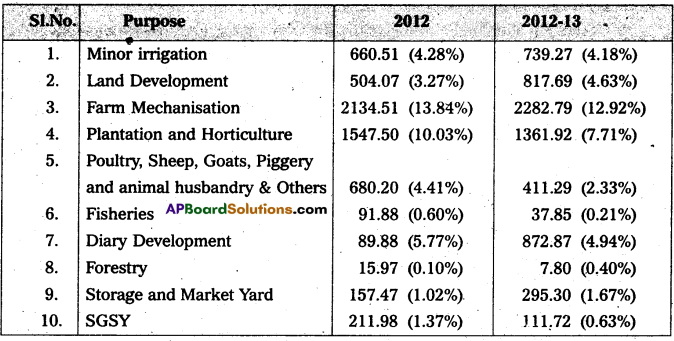

In the table the share of non-farm sector is high i.e., ₹ 5150.88 crore in 2012-13. Minor irrigation and development, mechanization, plantation, dairy development and self help groups derived much attention Of NABARD in its disbursement of refinance. The total amount disbursed by NABARD in 2012-13 is ₹ 17674.29 crore.
Question 14.
Explain the defects in agricultural marketing and suggest some remedial measures. [A.P. Mar. 18]
Answer:
No doubt, agricultural markets are operating efficiency in India, being influenced by the reforms and the process of globalization. However, the position of agricultural markets is deplorable in our country. The farmer is poor illiterate and ignorant. He does not have facilities to store his produce. He has caught in the evil hands of the middlemen. He has been suffering from the following defects of Agricultural marketing.
1. Inadequate storage facilities: There is lade of proper and sufficient storage facilities for the produce in rural areas. The available facilities are so bad and unscientific that more than 20 percent of the produce is eaten away by the rats.
2. Absence of proper Grading: The farmers are not getting a relevant price according to the equality of their products. They are not properly graded. They are sold in one common tot in heap of all quantities of produce consequently. The farmer producing products of better quality in not assured of a better price.
3. Inadequate transport facilities: Even today the farmers are using traditional means of transportation to move his produce to the markets. Railways and roadways are not properly connecting the village. Bullock carts are used to move the products. As a result, the farmer is forced to domp his produce at nearby weekly or daily markets. This is true particularly in the case of perishable commodities.
4. Existance of middlemen : More number of middlemen are operating in the agriculture marketing. As a result, the share of farmers is reduced in the prices realised for products sold in the market. Many studies observed that middlemen are grabbing almost 60 to 70 percent of the market price.
5. Malpractices in the markets: In the markets, the farmer is defective by the use of wrong weights and measures. He is also cheated by brokers and traders. The farmer has to pay weighing charge unloading charges, separation of impurities in the produce charges and many other miscellaneous undefined and unspecified charges.
6. Lack of adequate market information : The farmers are not having proper information about the prices existing in the markets. They are deprived of getting reasonable price for their products due to the inadequate information.
7. The farmers are unorganised : The farmers in India belong to different places, different languages and dialects and unorganized. The middlemen are strong and well organized. As a result, the farmers are unable to get proper price for their products.

Remedial measures: After independence the Government of India adopted a number of measures to improve the system of agricultural marketing.
- Regulated markets : Regulated markets have been started will view to ensure remunerative price to the products of the farmers. These markets check all unfair practices prevalent in the marketing of farm produce.
- Co-operative marketing: In this system all the farmers of a village form together into a co-operative marketing society to sell their products at a fair price rate.
- Contract farming: It is another good remedy for solving the problems Of agricultural marketing in our country.
- Rythu Bazars : The Andhra Pradesh Government has introduced the concept of Rythu Bazars as 26th January 1999. In these markets the farmers will sell their products directly to the consumers without the interference of middlemen.
- Facilities of grading and Standardisation : The Government of India has done much to grade and standardise many agricultural goods. For this purpose Government of India enacted legislation in 1937 and established grading centres at Jaipur, Bhopal and Nagpur etc.
- Warehousing facilities : Many warehouses have been constructed by the Central Government throughout the country. As a result, the farmers will store their products until they get fair prices.
- Transport facilities: Transportation plays an important role in marketing system. Cheap and easy means of transportation encourage the farmers to carry their products to the market and create confidence among the farmers.
- Credit facilities : The Government of India established institutions like Primary agricultural co-operative credit societes, Commercial banks, Regional rural banks etc.
- Market information : The farmers should have perfect knowledge of prevailing market prices. Thus, market information relating to the prices can be provided to the farmers through Radio, T.V.s and News papers etc.
Short Answer Questions
Question 1.
Explain the features of Indian agriculture.
Answer:
1) Uncertainty in crop output: Monsoon and climatic conditions play a significant role in Indian agriculture which often affects agriculture productivity adversely. Moreover, floods and drought are quite common. Hence, Indian agriculture is rightly to be called a “gamble on monsoon”. As a result of these unforeseen contigencies production and productivity are uncertain.
2) Feudal relation of Agriculture : After independence Zamindari and Mahalwari systems were abolished and Ryotwari system came into existence. Under this system tenants do not possess security of tenure, regulation of rent and ownership rights.
3) Rural Indebtedness: After independence the Government has initiated co-operative credit societies and banks for providing rural credit. However, the small and marginal farmers continue to depend on money lenders for their requirements. Hence, rural indebtedness prevailing in agriculture sector has become common. Because of indebtedness farmers are unable to invest more on agriculture to reap much harvest.
4) Dualism in Labour market: Because of pressure of population on land, wages in agricultural sector are considerably lower comparatively to the industrial and service sectors of the economy. The cheapness of labour in the traditional agricultural sector causes that labour in agriculture sector to be used extensively rather than other sectors of the economy where wages are high.
5) Diversities in Agricultural sector : The nature of soil, magnitude of rainfall, irrigation facilities etc, vary from one region to another region. Similarly, drought conditions, floods, problems of water salinity etc., vary among various regions of our country. The size of land holdings are differ in various regions. These variations affect cropping pattern.
6) Outmoded Farming techniques : Most of the Indian farmers continue to use outmoded farming techniques. The traditional agriculture depends on human and animal labour, rains and dung manure. Thus, this results in subsistence farming.

Question 2.
Explain the present conditions of agricultural labourers. [A.P. Mar. 18]
Answer:
Present conditions of Agricultural Labourers :
1) Low Social Status: Most of the agricultural labourers are belonged to the depressed classes. They have been neglected for ages. In case of such farm labourers, exploitation has become common and they have not fought for their rights.
2) Unorganised : Agricultural labourers are living in scattered villages. Moreover, they are illiterates. Hence, they cannot easily to be organized. As a results it is difficult for farm labourers to bargain with the land owners for good wages.
3) Seasonal Employment : Agricultural labourers have to face the problems of unemployment and underemployment. They are employed while sowing and harvesting season, of the year they remain unemployed.
4) Low Wages and Income : Agricultural wages and family incomes of agricultural labourer are very low. The wages of farm labourers vary from state to state. In case of attached labourers these wages are pathetic. However, as prices also increased considerably, the real wages rates did not increase much.
5) Rural Indebtedness : Because of the low level of income agricultural labour generally seek debts. In fact the debt of agricultural labourers passes from generation to generation and become bonded labour.
6) Femanisation of Agricultural labour : Female agricultural workers are generally forced to work harder. They are paid less wages comparatively to male workers.
7) High incidence of Child labour: It is estimated that one-third of child labourers in Asia are in India. The largest number of child workers are engaged in agriculture. Wages paid to child labourers are too low which adversely affect the incomes of their households.
8) Lack of subsidary professions : Another serious problem that is being faced by farm labourers is lack of non-agricultural occupations in. the villages. As there is no work on the fields, agricultural labour has no other means to earn for subsistence. Thus, they are disguised and are burden on land.
Question 3.
Explain the factors affecting cropping pattern.
Answer:
Factors affecting cropping pattern in India : The cropping pattern in India can be affected by various factors like physical, economical, technical and Government policies.
Physical Factors: Physical factors play a vital role in determining the cropping pattern. These factors are classified below.
- Climate and Rain fall: Climatic conditions and rainfall determine cropping pattern. Some crops require cool climate while some other crops require hot climate. For instance, apples will be produced in cool climate. For instance, crops like Paddy, Sugarcane require abundance of water.
- Nature of Soil and Fertility: Nature of soil and fertility determine the production of certain crops. For instance, wheat requires well drained silt and fertile loam soils but for cotton black soils are ideal.
- Irrigation facility: It also determine the cropping pattern. For instance crops, like Paddy, Sugarcane, Wheat etc., require assured irrigation facility. Some other crops like Jowar, Maize, Ragi etc., will grow in the areas where irrigation facilities are insufficient.

Question 4.
Explain the importance of irrigation.
Answer:
Importance of Irrigation :
1) Insufficient, uncertain and irregular rains : The period of rainfall is restricted to only four months during monsoons. Even during monsoons the rainfall is scanty. Sometimes monsoons are delayed while some other times they are prematured. This type of atmosphere results in drought conditions. Hence, with the help of proper development of irrigation, droughts and famines can be effectively controlled.
2) Higher productivity on irrigated land : Irrigation helps greatly in raising the productivity of land than unirrigated land. Because this enables the application of modern inputs like fertilizers, high yielding varieties of seeds etc.
3) Multiple cropping possible : India is a land of tropical and sub-tropical climate. It has potentialities to grow crops throughout the year but rainfall is restricted to less than four months. Provision of irrigation facilities can make possible the growing of multiple crops throughout the year.
4) Crucial role in new agricultural strategy: The successful implementation of high yielding varieties programmed depends on timely and adequate supply of water. These seeds require chemical fertilizers and substantial water at regular intervals of time. Therefore, irrigation facilities facilitates the expansion of new agricultural strategy to larger areas of land.
5) Bringing more land under cultivation: The total reporting area according to land utilization statistics was 305.56 million hectares in 2009-10. Thus, some portion of the waste land can be brought under cultivation if there is availability of irrigation facilities.
6) Prosperity : Irrigation helps in stabilizing the output and yield level. Irrigation plays a protective role during drought years. Thus, irrigation facilities prevent fall in output during drought and achieve stability in income and output which in turn result prosperity.
7) Indirect benefits of Irrigation: Expansion of irrigation facilities all over the country avoid disparities in the production of food grains. Irrigation promotes the growth of agriculture and allied sectors. Thus, increased production in agriculture stabilizes the prices of agricultural products.

Question 5.
What are the causes for low productivity ?
Answer:
The causes for low level of agriculture productivity in India are manifold. They can be grouped into four broad categories.
- General causes
- Institutional causes
- Technical causes
- Environmental causes
1) General causes:
i) Pressure of Population on Agriculture : Pressure of population on agriculture is heavy as a result of high growth rate of population and slow growth rate of other sectors of the economy. In 2011, about 263 million workers out of 348 million rural working populations are employed in agriculture. Increasing pressure of population on agriculture results, in the subdivisions and fragmentation of holding. Consequently, the productivity in agriculture sector remains low in India.
ii) Social Environment: The social environment of villages is an obstacle in agricultural development. The farmers in rural are illiterate, superstitious, conservative and unresponsive to new agriculture techniques. The decline of joint family system and land hunger are also discouraging the rural atmosphere. Peasants are not able to take proper care of their agriculture. Unless this atmosphere is changed, it is too difficult to enhance the productivity of agriculture.
iii) Lack of Infrastructural Facilities: Infrastructural facilities like transport, storage, credit and marketing are inadequate in rural areas to the growing population, due to lack of these adequate infrastructure facilities, the agricultural productivity in rural areas is very low.
iv) Impact of the British Regime : During British rule in India, they have not shown any interest in developing agriculture sector but made our economy as colonial one. Moreover, their policies like land tenure system, collection of land cess gave a deadly blow to the Indian agriculture.
2. Institutional causes:
i) Uneconomic Land Holding: According to the National Sample Survey, 52 percent land holdings had a size of less than 2 hectares in 1961 – 62. In 2010 -11,85 percent of total land holdings are less than 2 hectares. As a result of laws of inheritance and other reasons is a further divisions and fragmentation of land holdings. Hence, these small holdings are adversely affecting productivity of agriculture.
ii) Defects in Land Tenancy System : The Indian agriculture system was adversely affected before Independence because of defectives in Zamindari, Jagirdari, Mahalvari systems which exploited the farmers. In this system lack of certainty in rent, security of tenure and ownership right the tenants don’t show any attention to develop agriculture. Hence, India has become less productivity.
iii) Lack of credit and marketing facilities : The cultivators are not able to invest requisite sources in agriculture due to lack of marketing facilities and required credit at fair rate of interest. Even support price policy and subsidies to inputs of agriculture fired by the Government are unsatisfactory. Hence, peasants follow traditional methods which results in low productivity.
3. Technical causes:
i) Outmoded Agricultural Techniques : T. W. Schultz of famous economist opined that the peasants in India are still using traditional or outmoded techniques. Indian farmers are still using wooden ploughs, bullock carts, sickles etc. Use of fertilizers and new high yielding varieties of seeds is also extremely limited. Hence, the productivity in agriculture is low.
ii) Inadequate Irrigation Facilities : Gross cropped area in India in 2010 – 11 was 198.97 million hectares but only 89.36 million hectares of land had irrigation facilities. It implies that’55 percent of the gross cropped area continues to depend on rains. Rainfall is often insufficient, uncertain and irregular. In such atmosphere it is difficult to extend the new agricultural technology all over the country.
iii) Scarcity of Agricultural Inputs : The supply of modem agricultural inputs like fertilizers, pesticides, hybrid seeds, farm machinery etc., are inadequate to meet the requirements of our country. In order to achieve high production in agriculture requisite supply of inputs is essential.
4. Environmental causes : Environment also plays a vital role in affecting the productivity of agriculture, increase in the temperature. Degradation of soil, changes in temperature, pollution of water and air etc., adversely affect the productivity of agriculture are
- Global warming.
- Soil Degradation.
- The intensive cultivation of high yielding variety crops.
- The reckless use of fertilizers.
- Shifting cultivation.
- Displacement of the traditional practies of crops.

Question 6.
Examine the present pattern of land utilization.
Answer:
Land is the most important resource of natural resources of any country. Land has the characteristic of inelasticity in supply. The economic development of a nation is directly depends on the supply of land. Hence, certain modifications can occur in the existing pattern of land utilization. The total area land is about 306 million hectares. The total cropped area is about 192 million hectares. The total area under fallow lands is about 26 million hectares and the area under forests is 70 million hectares. Asa result of increased irrigation facilities culturable waste land has been declined to 12.85 million hectares. The Government has provided loans and subsidies to the farmers for land reclamation.
Question 7.
Consolidation of land holding.
Answer:
Consolidation of holdings is a proper solution to the problems of scattered holdings. Consolidation means all the holdings of the village are pooled together into one compact block. The owners of scattered land holders may voluntarily exchange their pieces of land into one compact block. The State Governments have adopted coercive methods to the cosolidation of holdings. It was started in 1951 – 52. The States are Punjab, Haryana, M.P, U.P implemented this programme. But the States of A.P, Tamilnadu, Rajasthan, West Bengal, Assam have not enacted the laws of consolidation. According to annual report of Ministry of Rural Development 2004, total area brought under consolidation was 163.3 million hectares.
Question 8.
Creation of Economic land holding.
Answer:
Creation of economic holdings is another important method to solve the problems of small size land holdings. To develop and strengthen Indian agriculture sector is inevitable to create economic holdings. The economic holdings also termed as ‘Family holding1 or ‘Optimum holding’.
According to Dr. Mann the economic holding as “one which will provide for an average family the minimum standard of life”.

Question 9.
Need for land reforms. [A.P. Mar. 17, 16]
Answer:
- Agriculture development : Agricultural development takes places when land reforms are entrusted in agrarian sector to avoid the hindrances to agricultural development. In such atmosphere technical reforms will be fruitful in agricultural sector.
- Economic. Development : Agrarian sector influences largely the economic development of our country. In order to attain sustainable growth rate in Indian agriculture, it is inevitable to implement land reforms.
- Social Justice: Land reforms are aimed at alleviating rural poverty by distributing land among the landless, providing security to tenant, protecting the interests of tribals. Land reforms aim at achieving social justice in the economy by eradicating poverty and disparities in income.
- Increase in Agricultural productivity: Land reforms are essential to increase the production and productivity in Agriculture.
Question 10.
Abolition of intermediaries.
Answer:
The first act to abolish intermediaries was passed in Madras in 1948. Later state after state enacted legislations abolishing intermediaries. As a result 30 lakh tenants and share croppers acquire ownership rights over a total cultivated area of 62 lakh acres. Compensation was paid to all the intermediaries on installment basis in our country unlike communist countries.
The Effects of Abolition of Intermediaries :
The following are the advantages of the abolition of Intermediaries.
- As a result of abolition of intermediaries, tenants became owners of the land and the exploitation came to an end. This helped to secure social justice in agraian structure.
- The ownership right to the tillers of the land enabled them to have a direct contact with Government which resulted in agriculture development in India.
- The Government provided infrastructure facilities for the development of farm sector as the land revenue increased substantially.
- A considerable area of cultivable waste land and private forests belonging to the intermediaries have been brought under cultivation.
Question 11.
Ceiling on land holdings.
Answer:
Ceiling on land is an important land reform. This is more essential not only to build rural economy on the basis of socialistic pattern of society but also imperative to save the rural masses from the exploitation. The ceiling on land holdings means statutory absolute limit on the amount of land which and individual cultivator or a household may possess. The supply of land is limited and the claimants for it possession are numerous. Therefore, it is unjust to allow exploitation by single individual over a large surface of land. Hence, the Government will take over the land beyond the limit of ceiling and redistributes it among landless labour and marginal farmers.
Objectives of celling of land:
- To reduce inequalities in agrarian sector.
- To enlarge the sphere of self employment.
- To eliminate exploitation and to provide equal opportunities to all..
- To meet the desire that land must belong to the tiller.

Question 12.
Reasons for poor performance of land reforms.
Answer:
Land reforms were implemented with good objectives, aiming at the development and empowerment of rural poor. However, in practice they were internally rejected. The following reasons can be mentioned for the poor performance of land reforms.
- Lack of political will.
- The rural poor are unorganised.
- Absence of updation of land records.
- Legal hurdles in the way of implementation.
- Weak administrative set up.
- Very little surplus lands were talan into possession.
- Provision of exemptions were used for evading the ceiling on land holdings.
- Laws were challenged on number of other grounds like rates of compensation, calculation of standard holdings etc.
- Reforms were given a low priority in development strategy.
Question 13.
Describe the impact of Green Revolution on Indian Economy. [A.P. Mar. 18, 17]
Answer:
Impact of Green Revolution on Indian Economy :
1. Increase in Foodgrain production: The rice production from 35.0 mts in 1960-61 increased to 99.37 mts in 2008-09. The production of wheat was 11.0 mts and rose to 77.63 mts. The production of pulses was only 12.7 mts in 1960-61 which has increased to 14.2 mts. Totally production of food grains was 82.0 mts in 1960-61 and that has increased 229.9 mts by the year 2008-09.
2. Boost to employment generation : Green revolution is the small farm revolution. Labour intensive crops like rice, sugarcane, potato, vegetables, fruits have increased the employment opportunities in agriculture sector. The entry of corporate houses has generated more employment opportunities in retailing business of fruits and vegetables.
3. Improvement in incomes: The impact of green revolution revealed that the farmers in Kerala, Madhya Pradesh, Andhra Pradesh, Tamilnadu, Gujarat, Punjab and Himachal Pradesh had good chances of improving their increases. It facilitates the farmers to follow simple but scientific and technical ways like grading the produce in the field itself selling directly to the corporate retail companies by avoiding middlemen. Organised retailers have provided better remunerations to the farmers. So the consumers were benefited in the form of quality produce at lower prices.
Therefore the green revolution has also widened the inequalities between big and small farmers in rural areas.
4. Forward and backward linkages strengthened: Agriculture supplies raw material to industries which is known as forward linkage. The new technology in agriculture has strengthened the backward linkage. This way the linkage between agriculture and industry has got strengthened.
5. Decrease in Poverty : The result of green revolution surplus in the production of food grains is actived.

Question 14.
Role of Regional Rural Bank in rural credit.
Answer:
Regional Rural Banks : According to the recommendations of the working group on Rural Banks headed by prof. M.Narasimham, the Government of India issued an ordinance country establish Regional Rural Banks in our country on October 2, 1975. Five Regional Rural Banks were started. Later the number rose to 196. The Government of India amalgamated Regional Rural Banks in order to consolidating and strengthening them. As on March, 2013, the total member of branches of RRBs were 17,856 across 635 districts in 26 states and one Union Territory.
The Nationalized commercial banks are sponsoring the RRBs. Each Regional Rural Bank had an authorized capital of ₹ 1 crore and paid up capital ₹ 25 lakhs. The share capital has subscribed by the Central Govt. 50% the State Govt, concerned 15% and sponsoring commercial banks 35%.
The main objective of RRBs is to provide credit and other facilities to the small and marginal farmers, agricultural labourers, so as to develop commerce, agriculture and other productive activities.
Question 15.
Primary Agricultural Co – operative Credit Societies.
Answer:
Co-operative credit societies : Co-operative credit system was successfully implemented in Germany by providing cheap credit. Keeping it in view this co-operative movement was started in India in 1904. These societies were organized to relieve the indebtedness of rural people and to promote shift.
The co-operative credit institutions in India have been organized into short term and long term structures.
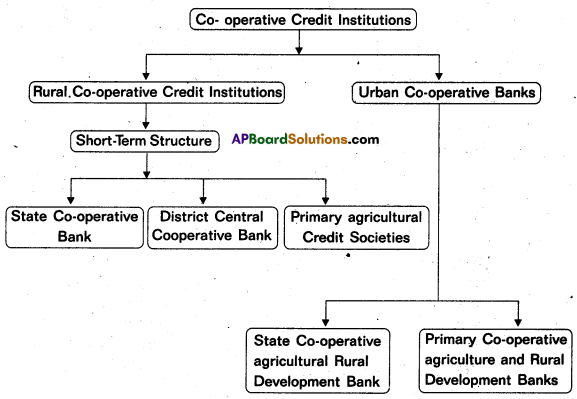
PACSs are organized at village level. They can be formed by any ten or more than ten persons. In order to strengthen PACSs financially the Reserve Bank of India, in collaboration with State Governments had been taking a series of steps. Commercial banks in India introduced a scheme of financing through PACSs for disbursing agricultural loans. The StCB advances loans to DCCBs in order to augment their capacity to advance loans to the village PACSs. PACSs are organized at village level. The management of the society is under an elected body consisting of a president, secretary and treasurer.
The total volume of credit supplied by these co-operative banks for agricultural sector has reached to ₹ 87,963 crore by 2012. The co-operative credit system is organizationally and financially weak to meet the credit needs of agricultural sector. Hence, co-operation has failed, but co-operation must succeed.
Question 16.
Commercial banks and Rural credit.
Answer:
The commercial banks started a vital role after nationalization of 14 banks in 1969 and 6 banks in 1980. As far as rural credit is concerned, the role of commercial banks is highly appreciable. These banks are supplying credit to the rural areas in the following manner. –
1) Commercial banks are supplying credit for short term and long term requirements of the needy farmers in rural areas. They are providing short term crop loans which accounted 42 to 45 percent of total loans disbursed by commercial banks. Long term loans are extended by commercial banks for purchasing pump sets, tractors and other agricultural machinery which accounted 35 to 37 % of total loans disbursed by commercial banks.
2) Commercial banks are extending credit facilities to agricultural allied activities like dairying, poultry, farming, piggery, fisheries etc.
3) Commercial banks working for the implementation of various rural development programmes like IRDP ; JRY etc by sanctioning and disbursing credit to the beneficiaries.
4) Commercial banks are indirectly helping the rural farmers by extending credit for fertilisers and pesticides companies. Central warehousing Corporation and Regional Rural banks.

Question 17.
Role of Reserve Bank of India in Rural Credit.
Answer:
RBI was established in 1935 and was nationalized in 1949. It has been rendering viable services for the development of rural areas. It has started agriculture credit department and two separate funds in 1956 to supply to the agriculture sector. They are 1. National Agriculture Credit Fund. 2. National Agricultural Credit Stabilization Fund.
R.B.I provides credit to the farmers through State co-operative banks in the following ways.
a) Short Term Credit: RBI provides short term credit facilities to State co-operative banks at a lower interest rate for a period of 15 months by providing rediscounting facilities on Govt, securities and debentures of land development bank.
b) Medium Term Credit: R.B.I has been providing medium term credit to the State co-operative banks for a period of 15 months to 5 years.
c) Long term Credit: R.B.I provides long term credit to the State Govt, for agricultural development activities. The term credit varies from 5 years to 20 years.
Other services:
- It provides credit to all the institutions which are engaged in rural credit.
- It provides loans for small farmers development agency and marginal farmers development agency.
Question 18.
Defects in the Agricultural marketing in India.
Answer:
No doubt, agricultural markets are operating efficiency in India, being influenced by the reforms and the process of globalization. However, the position of agricultural markets is deplorable in our country. The farmer is poor illiterate and ignorant. He does not have facilities to store his produce. He has caught in the evil hands of the middlemen. He has been suffering from the following defects of Agricultural marketing.
1. Inadequate storage facilities: There is lack of proper and sufficient storage facilities for the produce in rural areas. The available facilities are so bad and unscientific that more than 20 percent of the produce is eaten away by the rats.
2. Absence of proper Grading: The farmers are not getting a relevant price according to the equality of their products. They are not properly graded. They are sold in one common tot in heap of all quantities of produce consequently. The farmer producing products of better quality in not assured of a better price.
3. Inadequate transport facilities: Even today the farmers are using traditional means of transportation to move his produce to the markets. Railways and roadways are not properly connecting the village. Bullock carts are used to move the products. As a result, the farmer is forced to domp his produce at nearby weekly or daily markets. This is true particularly in the case of perishable commodities.
4. Existance of middlemen : More number of middlemen are operating in the agriculture marketing. As a result, the share of farmers is reduced in the prices realised for products sold in the market. Many studies observed that middlemen are grabbing almost 60 to 70 percent of the market price.
5. Malpractices in the markets : In the markets, the farmer is defective by the use of wrong weights and measures. He is also cheated by brokers and traders. The farmer has to pay weighing charge unloading charges, separation of impurities in the produce charges and many other miscellaneous undefined and unspecified charges.
6. Lack of adequate market information : The farmers are not having proper information about the prices existing in the markets. They are deprived of getting reasonable price for their products due to the inadequate information.
7. The farmers are unorganised : The farmers in India belong to different places, different languages and dialects and unorganized. The middlemen are strong and well organized. As a result, the farmers are unable to get proper price for their products.

Question 19.
Various stages of agricultural marketing.
Answer:
Farms cannot sell away all the their products instaniously after harvesting. These products must go through a series of stages before they are actually marketed. Such stages in agricultural marketing.
- Assembling: The total produce of various farmers from various places should be brought to one place. The process of pooling up of small surpluses of individual farmers in the market of the producing area is called assembling.
- Transportation : All the farm products must be transported from the producer markets to consumer markets. Transportation facilitates the availability Of goods in the market.
- Grading: All the assembled products should be graded and standardized according to their quality and durability.
- Processing : All the agricultural products assembled and graded cannot be used directly. So those products should be made useful for consumption.
- Sampling: Samples are to be made from the graded, standardized and processed produce. This sampling process enables the consumer to choose the best goods from the market.
- Packing: All the farms products whether processed or not must be packed to ensure better quality.
- Storing: All the farms products processed and packed cannot be sold immediately. They have to be preserved in store houses until they are sold.
Question 20.
Regulated markets. [A.P. Mar. 16]
Answer:
Regulated markets have been started with view to ensure remunerative price .to the products of farmers reduce the price spread between the producers and consumers. It check all unfair practices in the market. Most of the States implemented Act of agriculture marketing. In India 1951, 200 regulated markets were started. In 2005 the number of regulated markets increased 7521.
Functions :
- Fixation of charges for weighing and brokerage.
- Enforcing the use of standardized weights.
- Providing up to date information of market prices.
- Prevention of unauthorised deductions and under hand dealings.
- Market licenses are given to the middle men and their number is to be minimized.
- Setting of disputes among the parties arising in market operations.
- Warehouses and cold storages should be provided to the farmers wherever necessary.

Question 21.
Co-operative marketing.
Answer:
The first co-operative marketing society was started in India in 1915 which was implemented in Denmark. It was started with the purpose of giving credit to the farmers and marketing their surplus products. According to this system all the farmers of a village form together into a co-operative marketing society to sell their products at a fair price. The members of the society sell their products to the society. These societies are maintained by efficient paid staff. These societies sell their products at high prices in order to provide remunerative prices to their members.
Advantages: .
- Prices of farm produces will be remunerative.
- The co-operative marketing has its own storage and warehousing facilities. Thus it can avoid damage to agriculture products through rain, rats etc.
- These markets provide grading and standardizing facilities.
- Co-operative marketing control the flow of supplies and influences the price.
- These markets advance loans to the farmers and ensure them wait for better price.
- Co-operative marketing reduces cost of transportation.
Question 22.
Contract farming.
Answer:
Contract farming means that farming in which sale contract is made between fanners and users of farm products. Industries sugar, cotton, jute etc., have sale contracts with the farmers. The. following are the advantages of contract farming.
- Collective sale contracts of farmers provide better result than individual contracts.
- Fluctuations in the prices of farm products can be minimized and income of farmers can be maximized.
- Farmers will receive credit and technological support from the industries with whom they have sale contract.
- Prices of these products are fixed well in advance the farmers and put to effort to maintain quality of the products which have sale contracts.
Very Short Answer Questions
Question 1.
Agriculture sector.
Answer:
It is the sector which includes forestry, fishing, mining and quarrying and allied activities like animal husbandry etc., along with agriculture.
Question 2.
Agro based industries.
Answer:
Industries which depend an agriculture products for their raw materials are called agro based industries. Ex : Cotton, textile, flour mills, sugar etc., directly depend on agriculture for raw materials.

Question 3.
Food security.
Answer:
Food security is such a security which enables the people to have all time enough food for an active and healthy life.
Question 4.
Land reclamation.
Answer:
It means regaining the ownership on land after abolition of Zamindari system to make the land useful.
Question 5.
Cropping pattern.
Answer:
It is the pattern of utilisation of total farm land for producing different crops in a country at a point of time.
Question 6.
Perennial canals.
Answer:
These canals supply water through the year to irrigate lands as they are connected to the dams or rivers.
Question 7.
Drip irrigation.
Answer:
It is the system where water is deliver at or near root zones of plants, drop by drop.
Question 8.
Sprinkler irrigation.
Answer:
This is also called overhead irrigation system, water is piped to one or more central locations within the held and distributed by overhead high pressure sprinklers or guns.

Question 9.
Land reforms.
Answer:
Land reforms are the introduction of economic and non-economic changes relating to land in order to achieve social justice and agriculture development.
Question 10.
Organic farming. [A.P. Mar. 16]
Answer:
It is the farming which uses natural fertilizers and pesticides.
Question 11.
Economic holdings.
Answer:
Economic holdings is the size of holdings which provides a decant standard of giving of the members of the family.
Question 12.
Farm mechanization.
Answer:
It is the implementation of machines like tractors, pumpsets, harvesting, machines etc, in agriculture operations.
Question 13.
Consolidation of holdings.
Answer:
Consolidation of holdings means all the holdings of the village are pooled together into one unit. .
Question 14.
Co-operative farming. [A.P. Mar. 18]
Answer:
Co-operative farming means where the total land of village pooled into one unit and farmed together.

Question 15.
Objectives of land reforms.
Answer:
Land reforms facilitates the redistribution of land with a view to safe guard the interests of small and marginal farmers.
- Establishment of social justice.
- To provide security for the filler of soil.
- Assurance of equality Of status and opportunity for all sections of the rural population.
Question 16.
Zamindari system.
Answer:
Lord Comwalls introduced this system in Bengal in 1793. In this .system, the land was held by a few zamindars. They were entrusted with the responsibility of collection of revenue fixed by the British Government.
Question 17.
Ryotwari system. [A.P. Mar. 16]
Answer:
Thomas Manro introduced this system in Tamil Nadu in 1792. In this system had full rights regarding sale, transfer and leasing of land. Under this system no middle man exists between farmer and Government.
Question 18.
Occupancy tenant.
Answer:
Occupancy tenants are those tenants whom cannot be evicted by land lords until they pay rent.
Question 19.
Green Revolution.
Answer:
William S. Gand is the first economist who used the term green revolution. It was also called a “new strategy of agriculture development”. It is the result of the technological break through composed of improved irrigation facilities, better agricultural practices and mechanisation of agricultural operations.

Question 20.
IADP.
Answer:
Intensive Agriculture District Programme. This was introduced oh the basis of recommendations of Ford team. The Govt, provide fertilizers, pesticides, hybrid seeds etc., to all the farmers of the selected districts at a subsidize rate. Ex: West Godavari in A.P.
Question 21.
IAAP.
Answer:
Intensive Agriculture Area Programme. This was introduced in the year 1967. Under this system intensive cultivation has extended to other districts in various states.
Question 22.
HYVP.
Answer:
High Yielding Variety Programme. This was introduced in the year 1965.
Question 23.
RIDF.
Answer:
Rural Infrastructure Development Fund was created in 1995 – 96 from out short form of commercial banks landing priority sectors and agriculture.
Question 24.
Kisan Credit Cards. [A.P. Mar. 17]
Answer:
It was introduced in 1998 to facilitate the flow for crop loan by providing adequate, timely cost, effective short term loans. It also enables the farmers to purchase agriculture inputs and to draw cash for their production needs.

Question 25.
SGSY.
Answer:
Swama Jayanti Gram Swarozgar Yojana started on 1999. It is sponsored scheme. SGSY is a credit – cum – subsidy programme.
Question 26.
Micro Finance.
Answer:
It is the provision of finance on a small scale to the rural and urban poor.
Question 27.
Assembling.
Answer:
The process of pooling up of small surplus of individual farmers in the market of the producing area is called assembling.
Question 28.
Processing.
Answer:
Processing is the conversion of agriculture products into consumption.
Question 29.
AGMARK. [A.P. Mar. 18]
Answer:
It is simply an abbreviation for agriculture marketing which is the symbol of quality of produce.

Question 30.
Marketable suplus. [A.P. Mar. 18, 17]
Answer:
Marketable surplus is the available surplus for marketing after meeting all the requirements of the farmers.
Question 31.
Rythu Bazar. [A.P. Mar. 17, 16]
Answer:
It is a market where there is no existence of middle men between farmer Vs buyer.
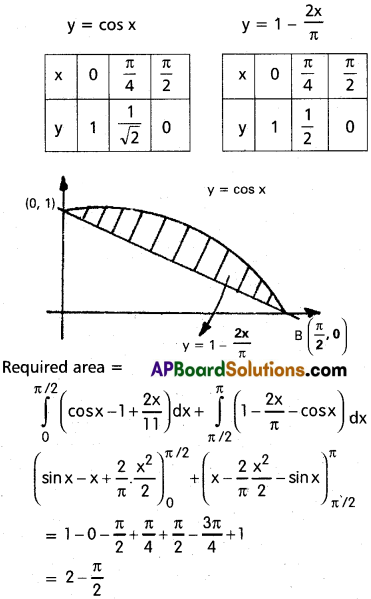

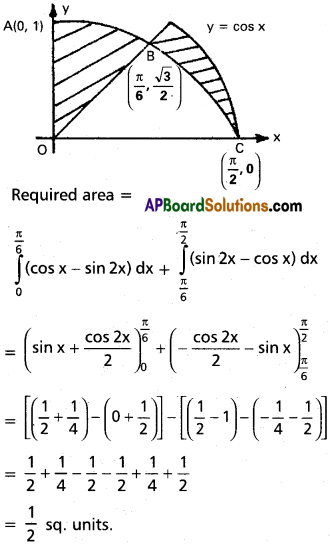
![]()

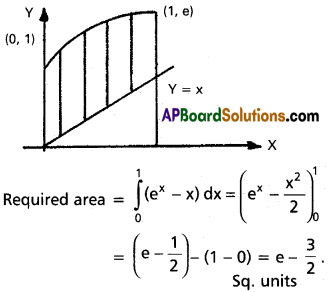
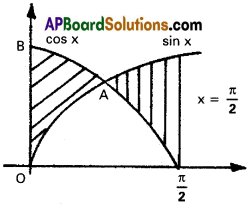
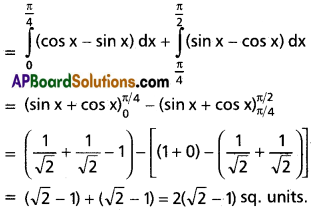
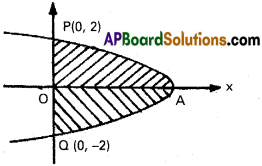
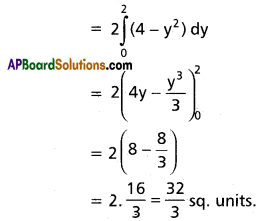

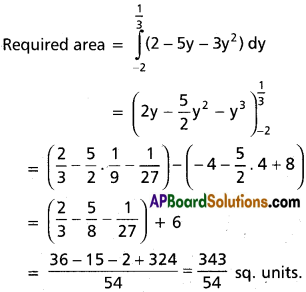
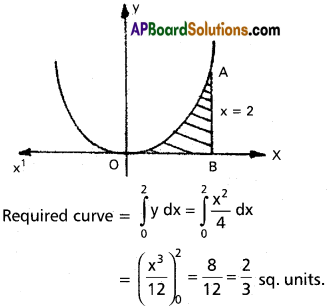
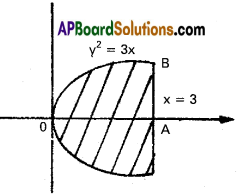
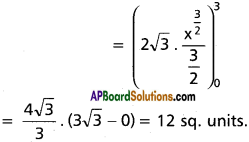
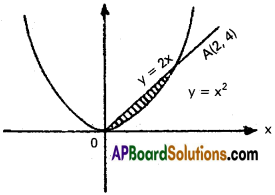
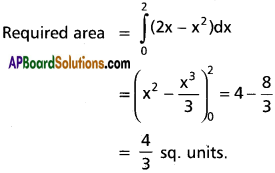
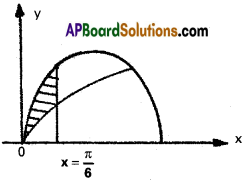
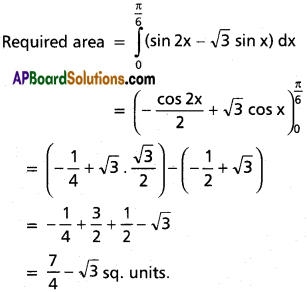
![]()
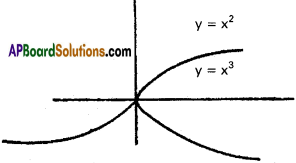

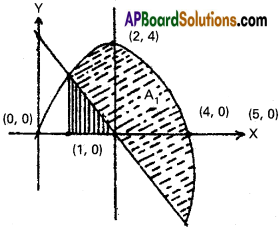
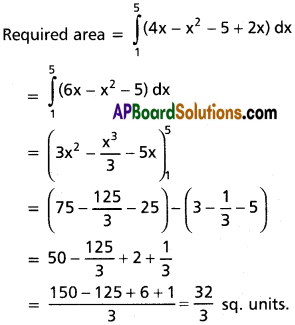
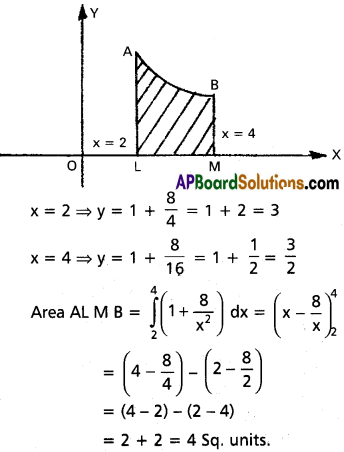
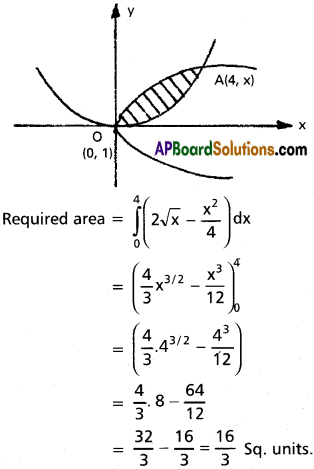

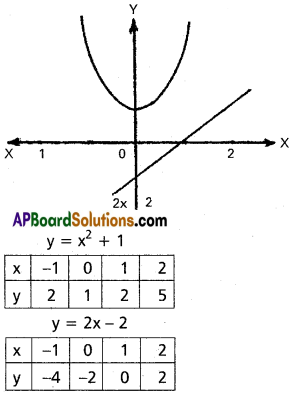
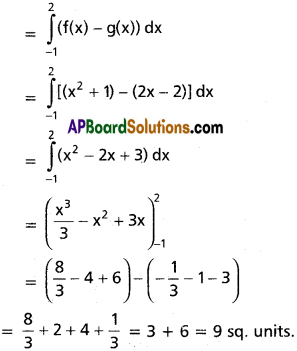
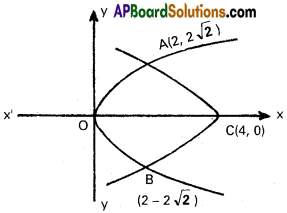
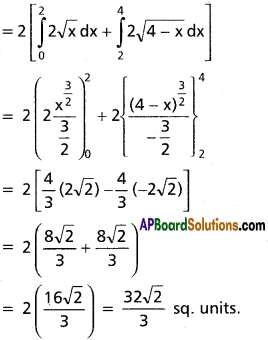
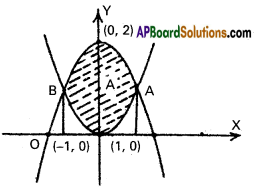
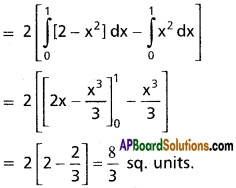
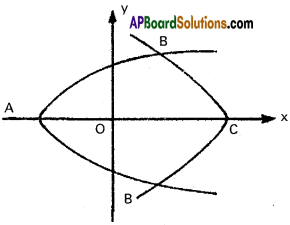
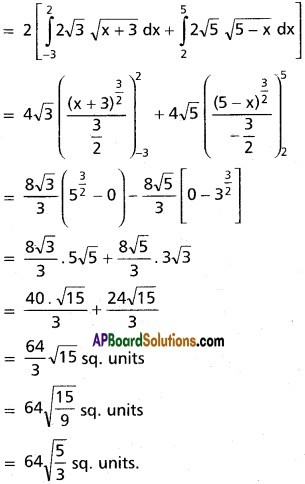
![]()
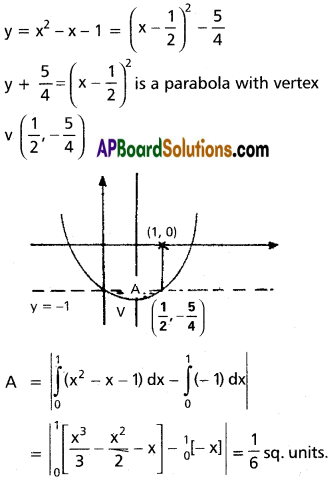
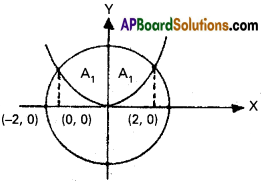
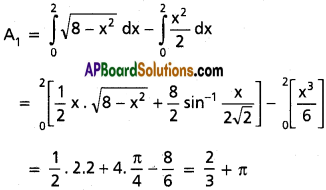
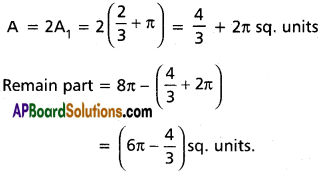
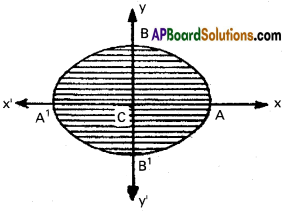
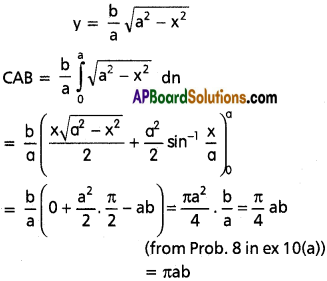
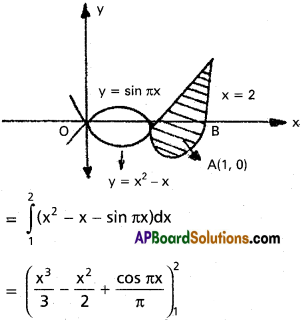

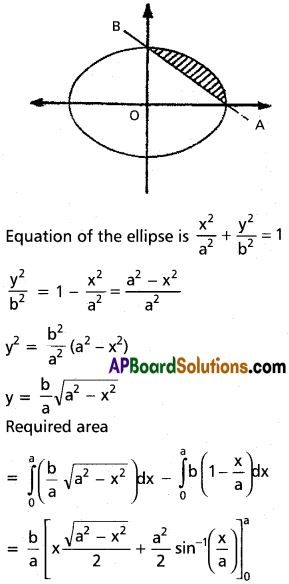

![]()

